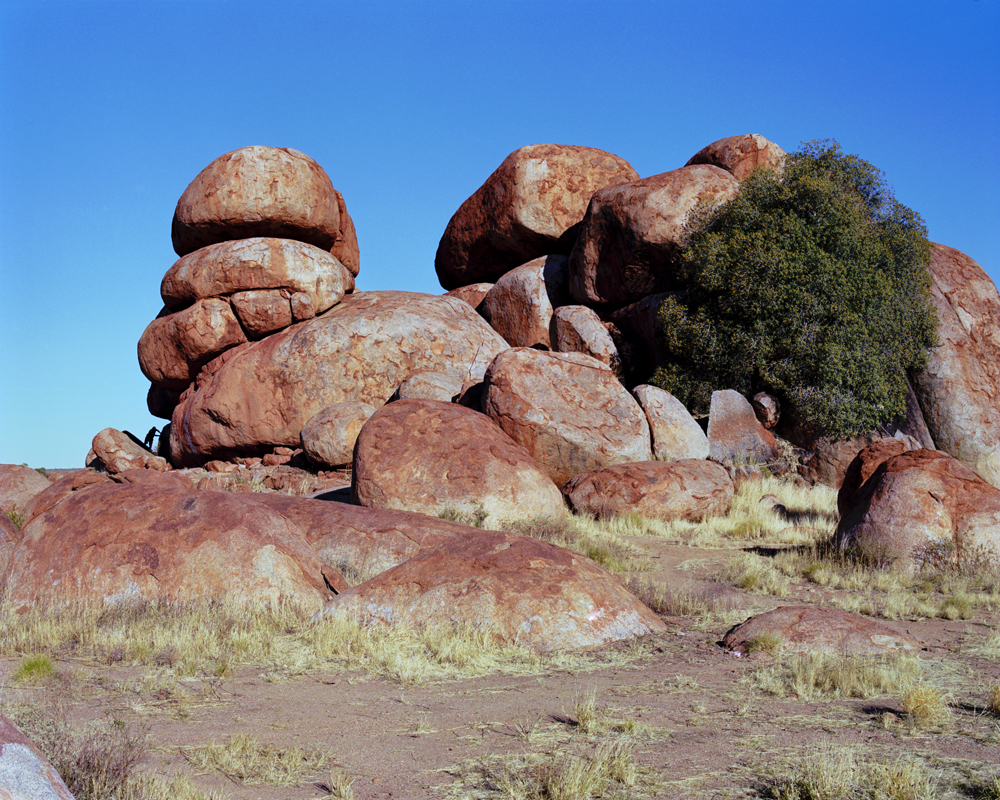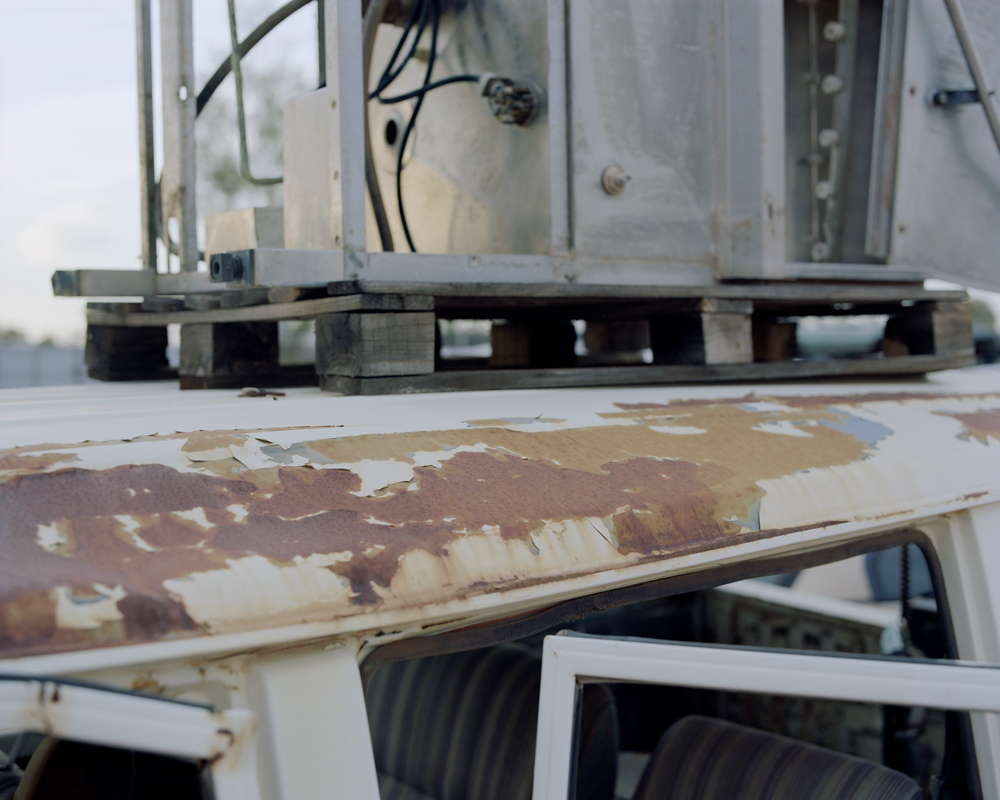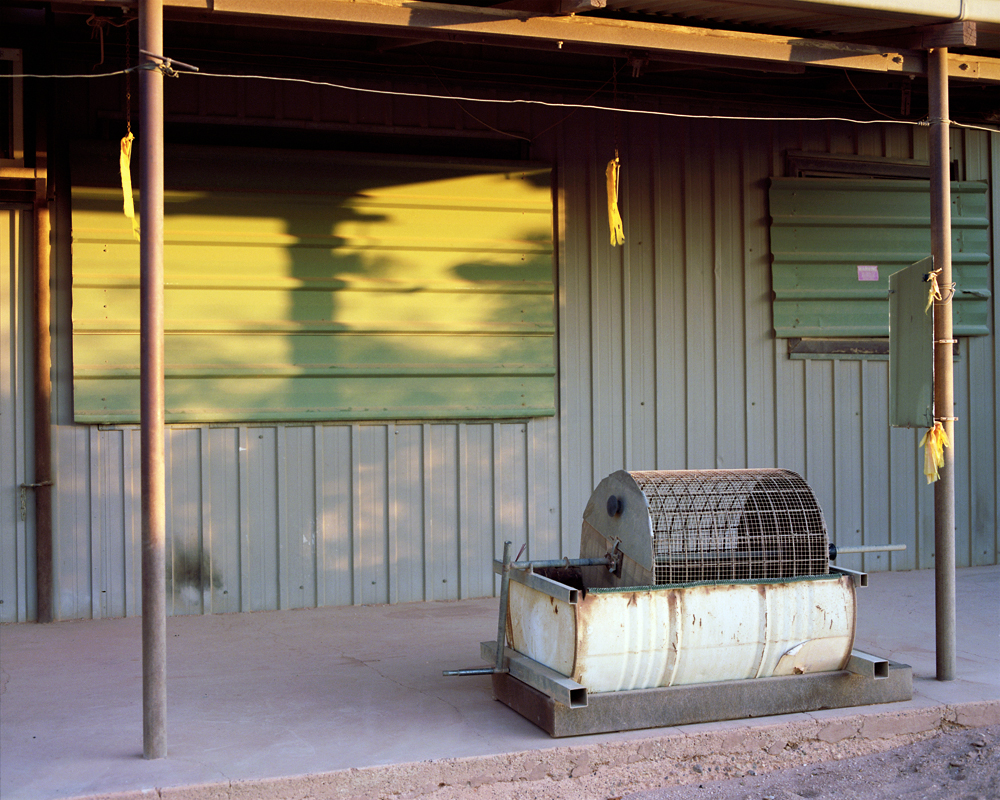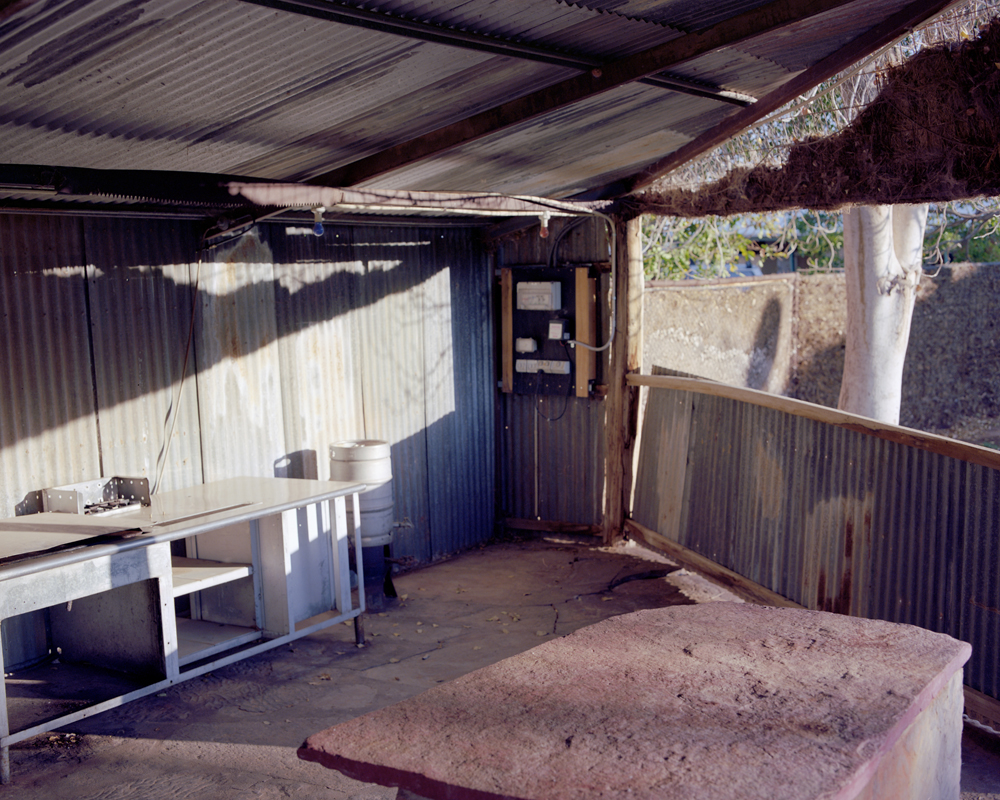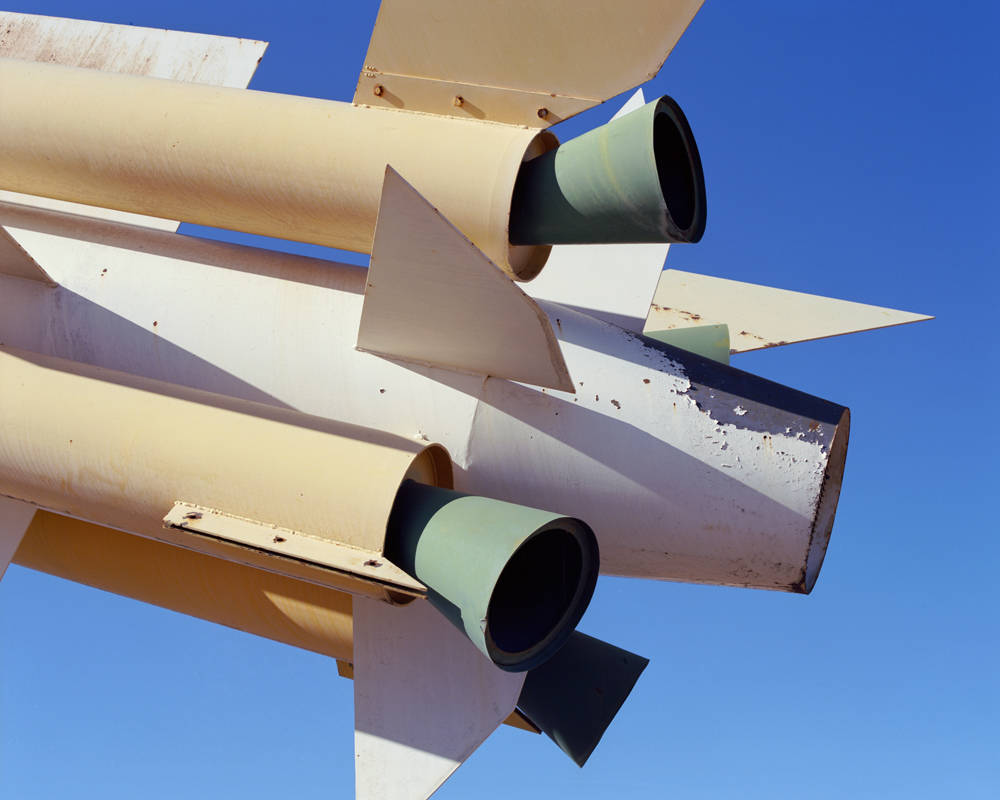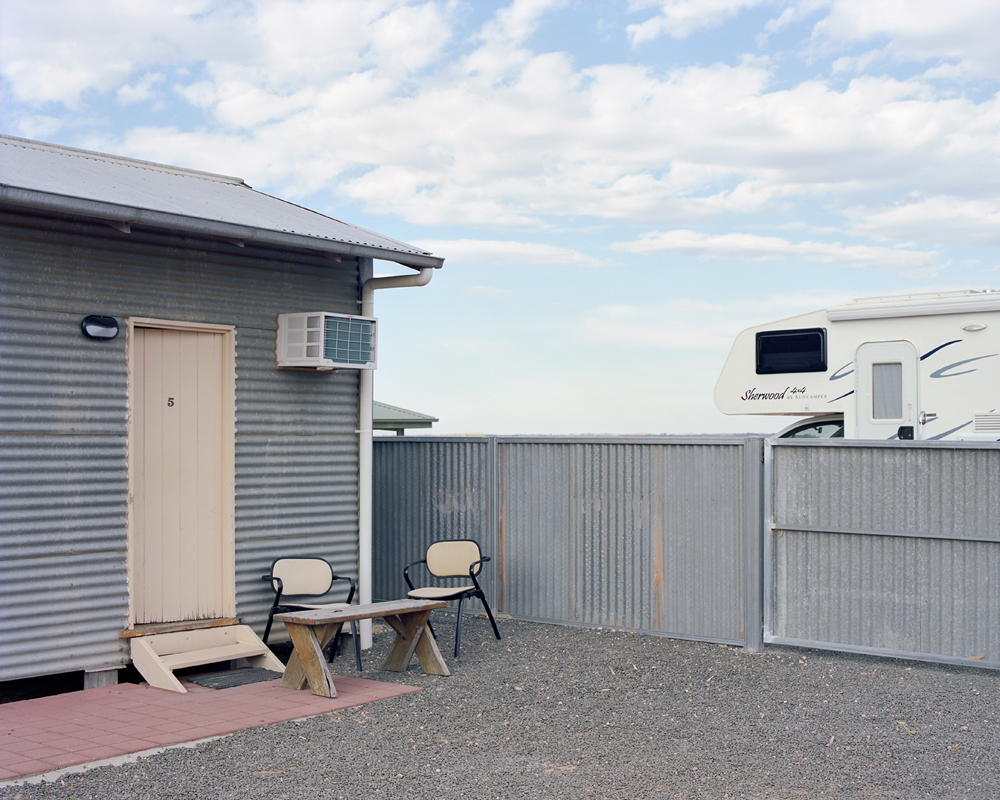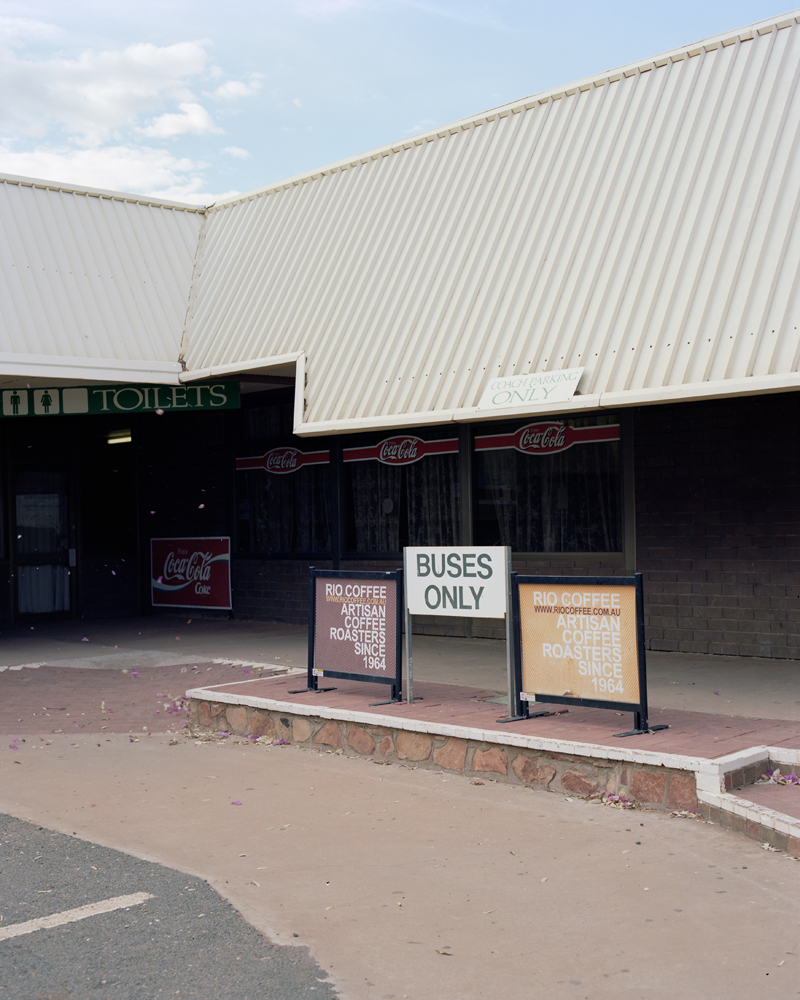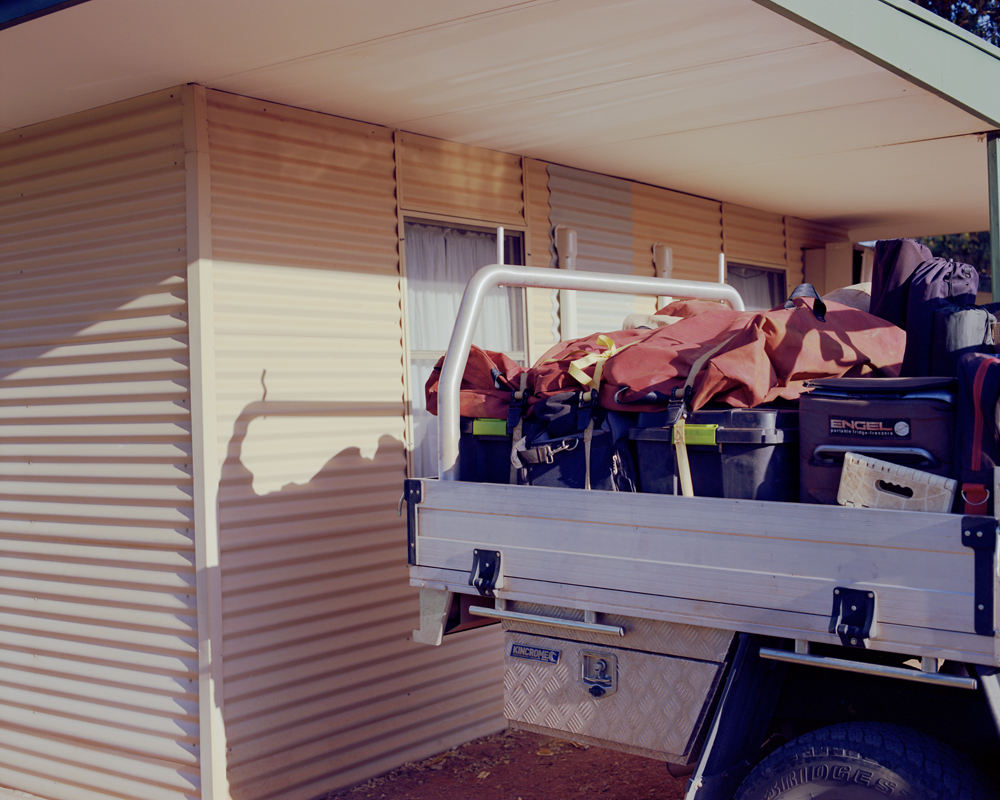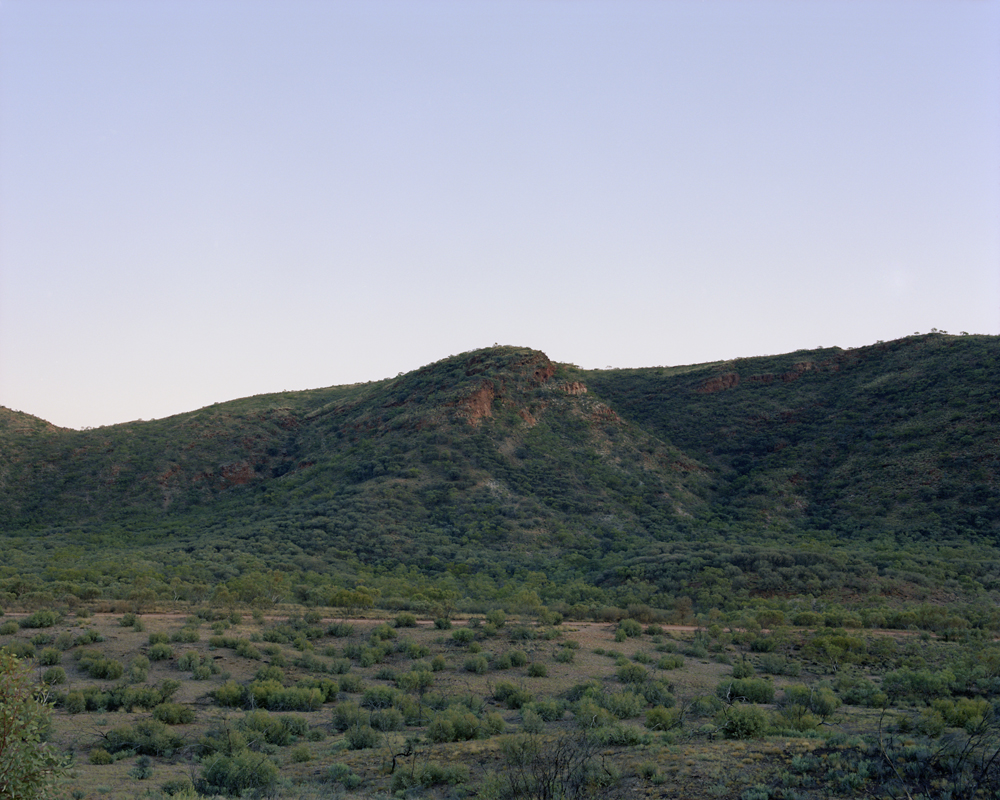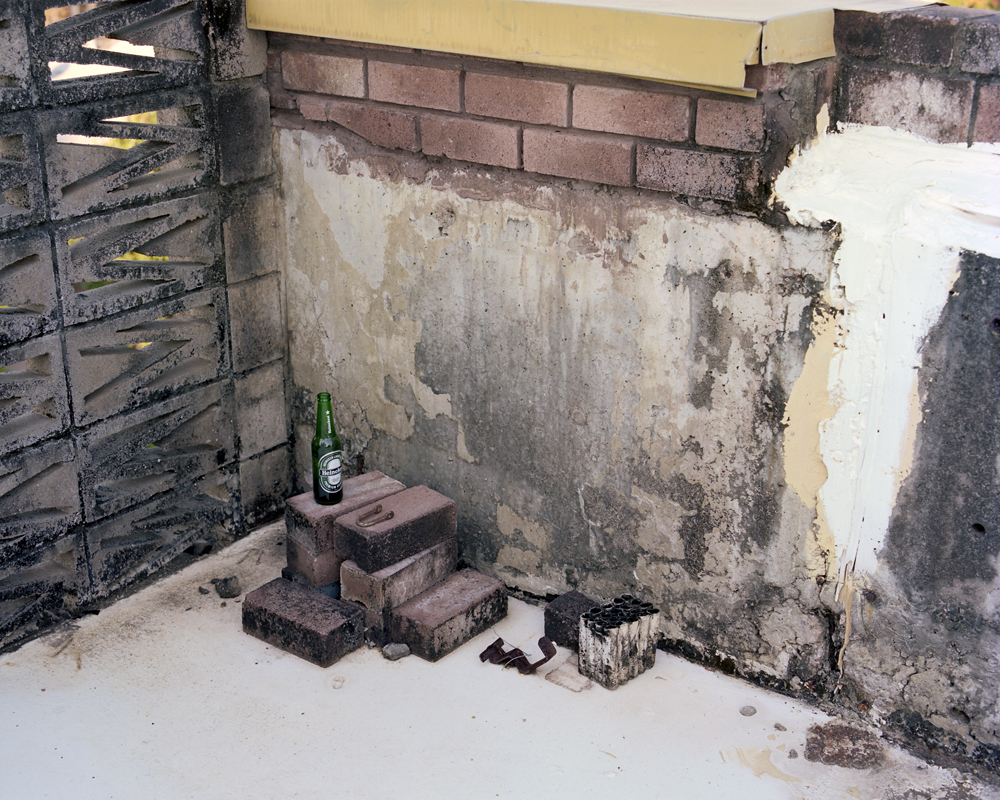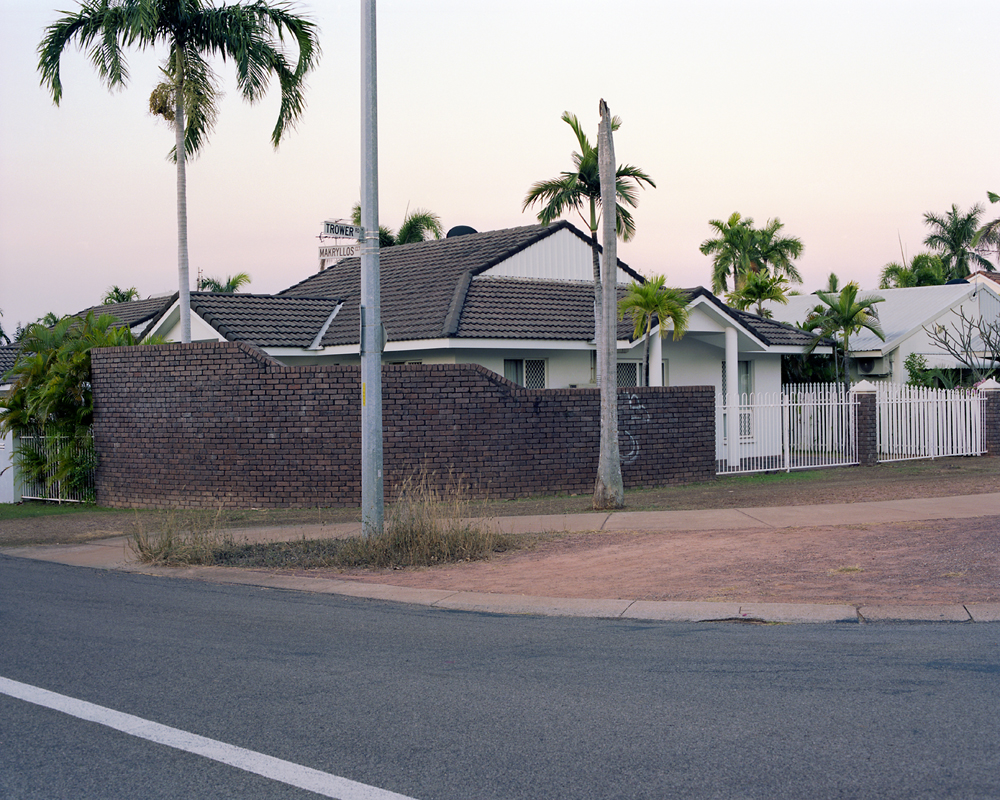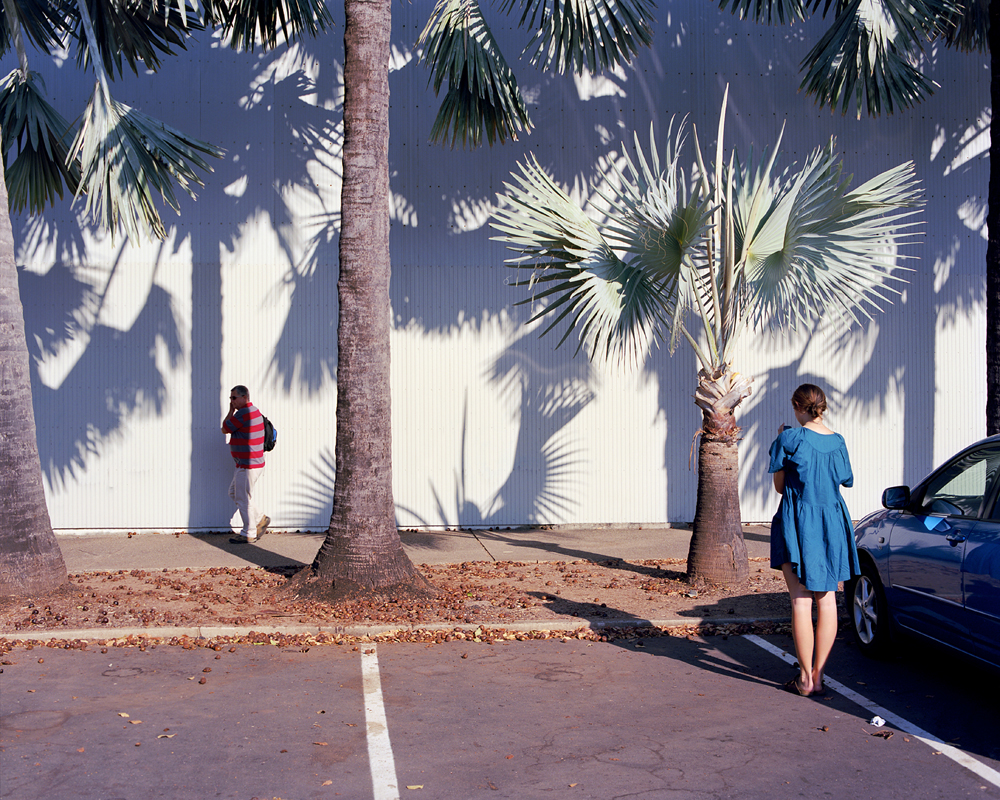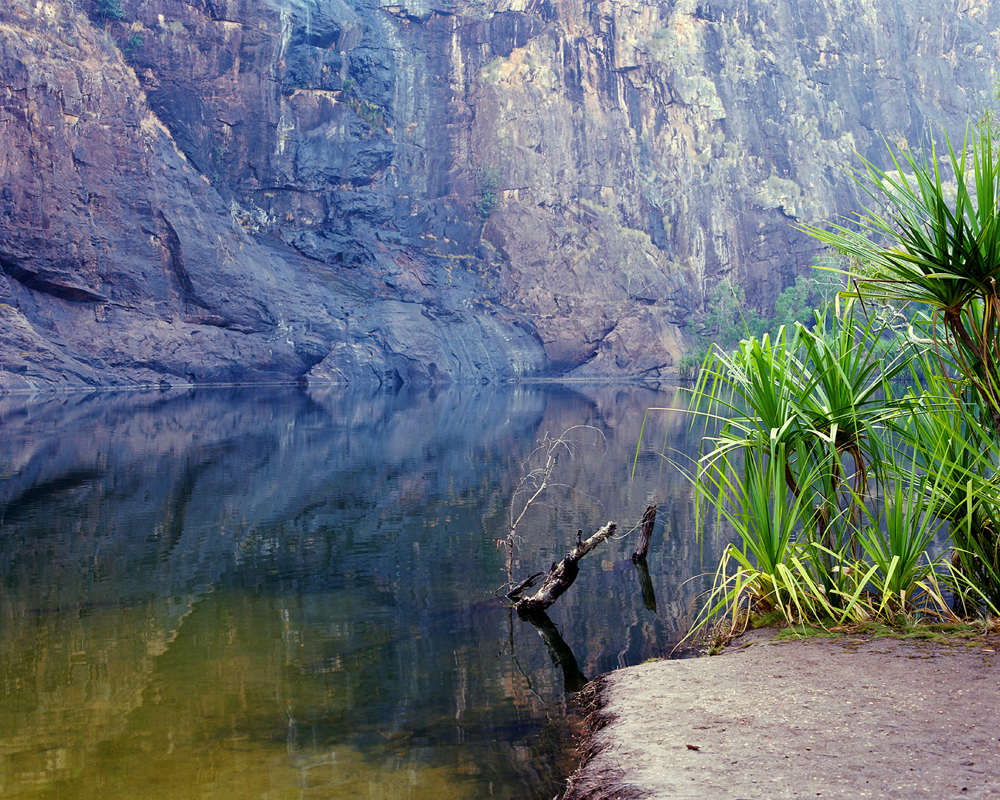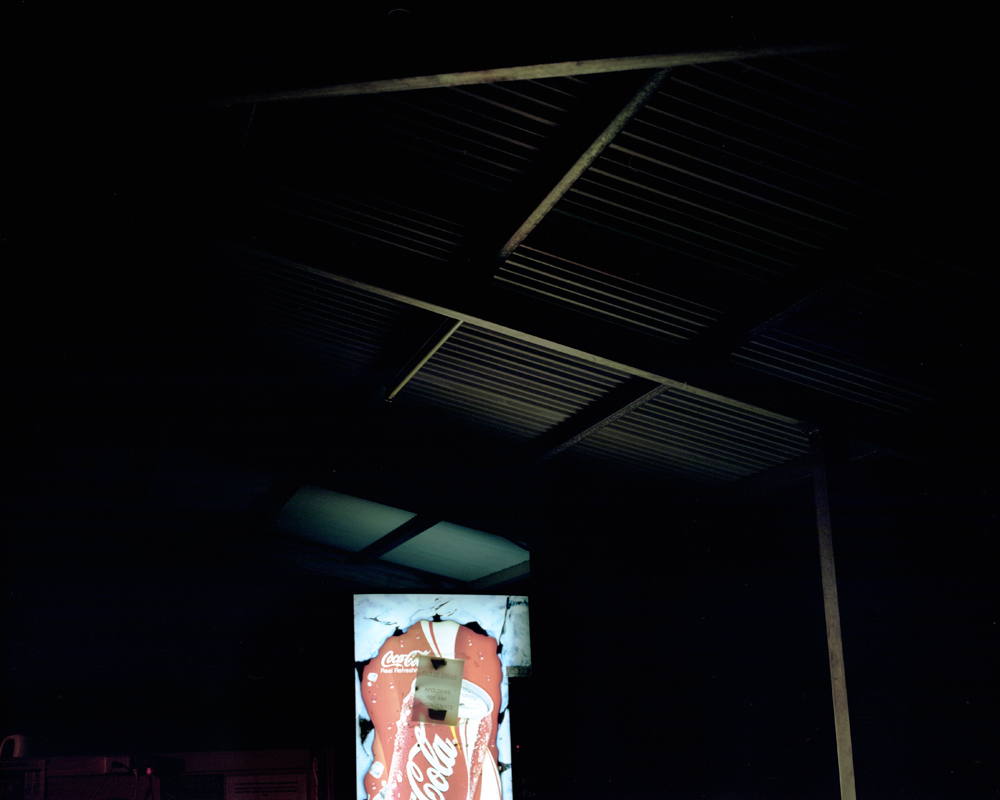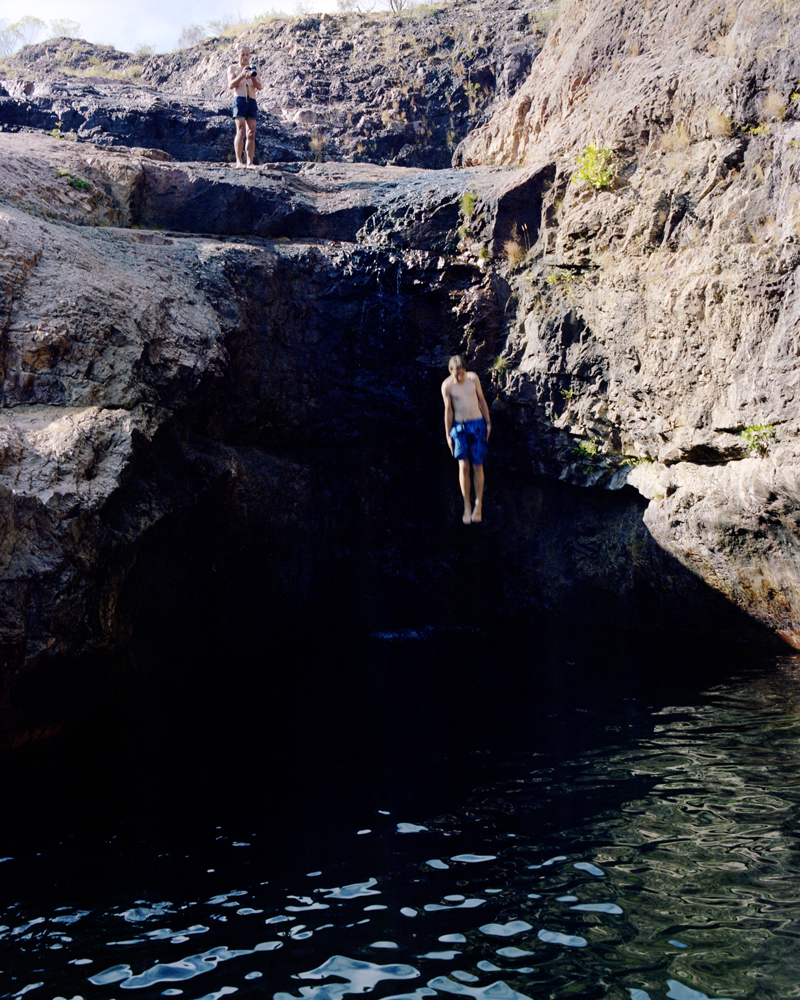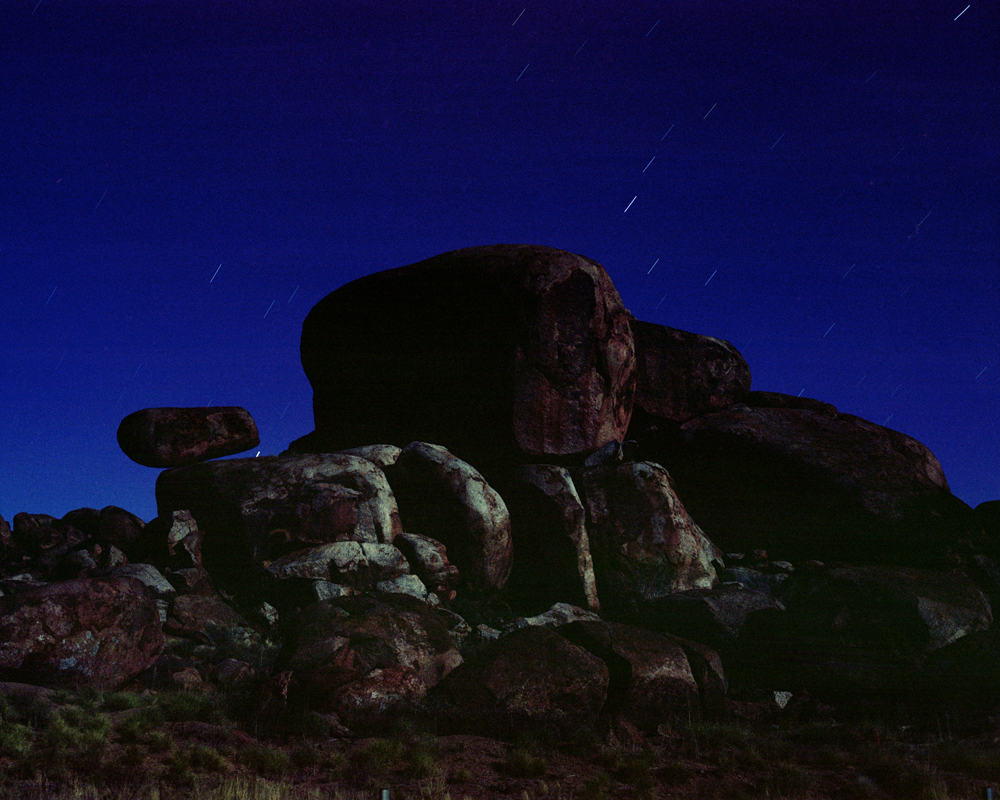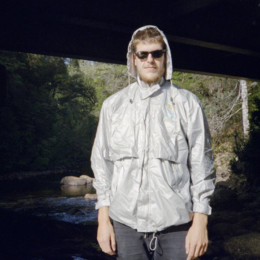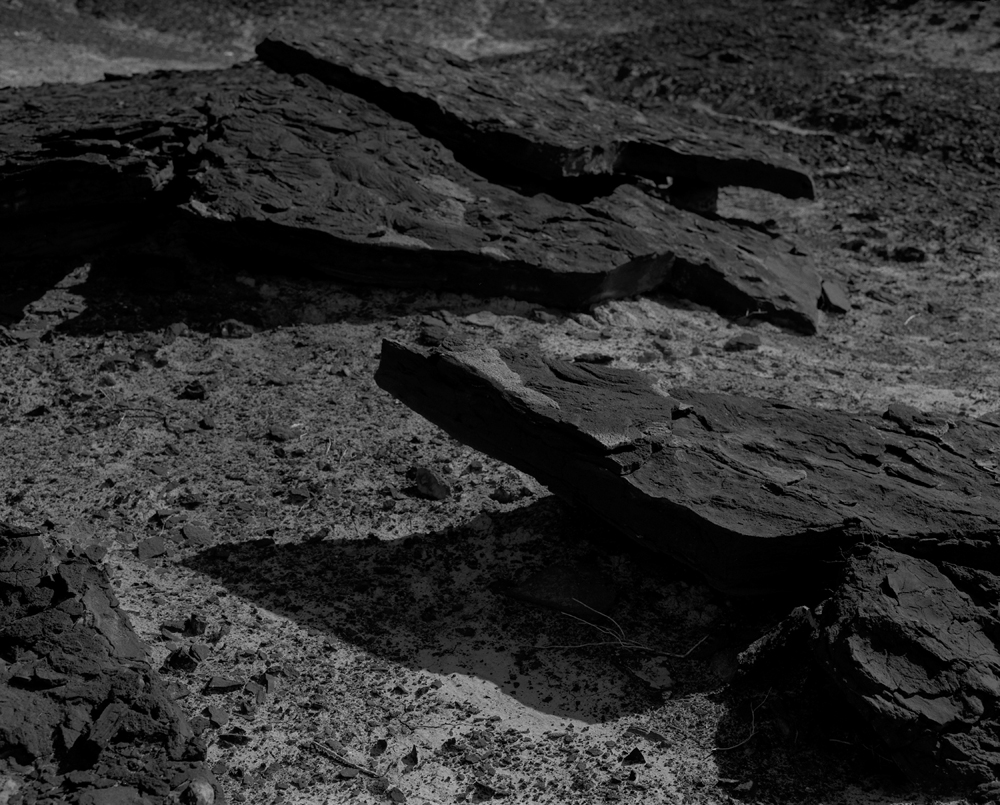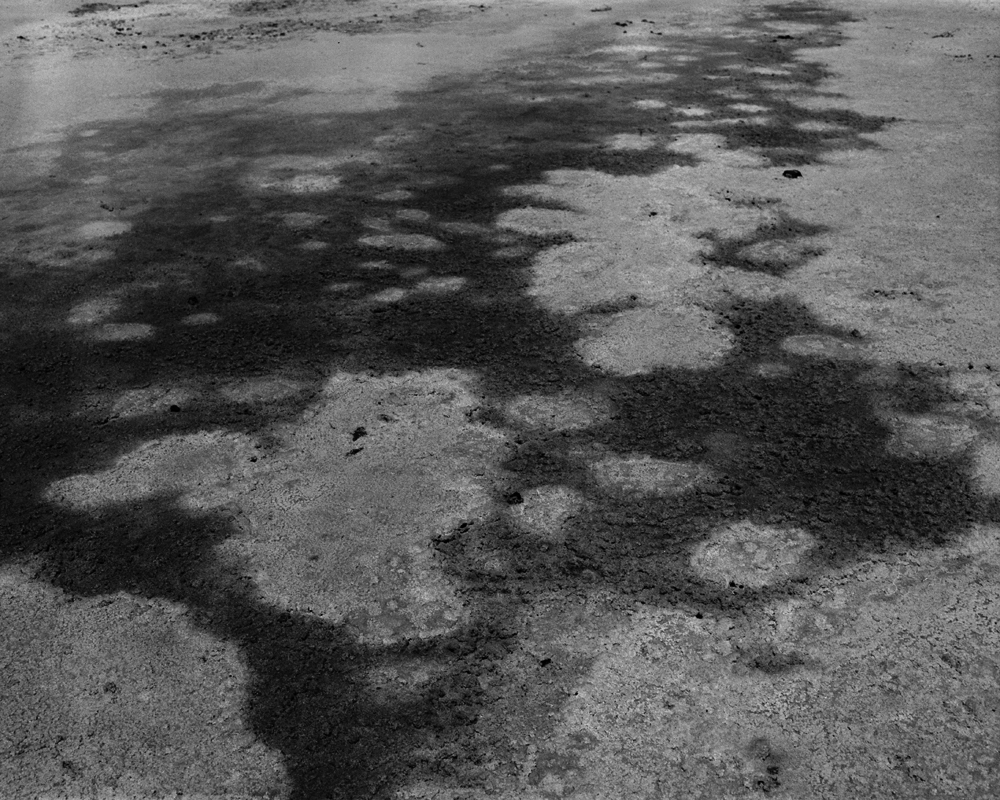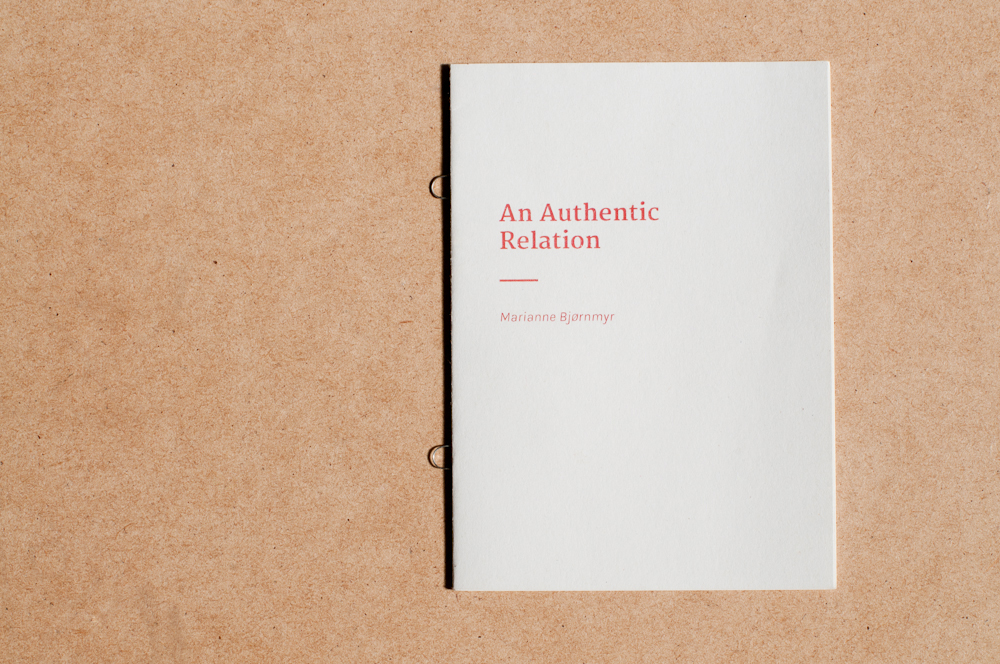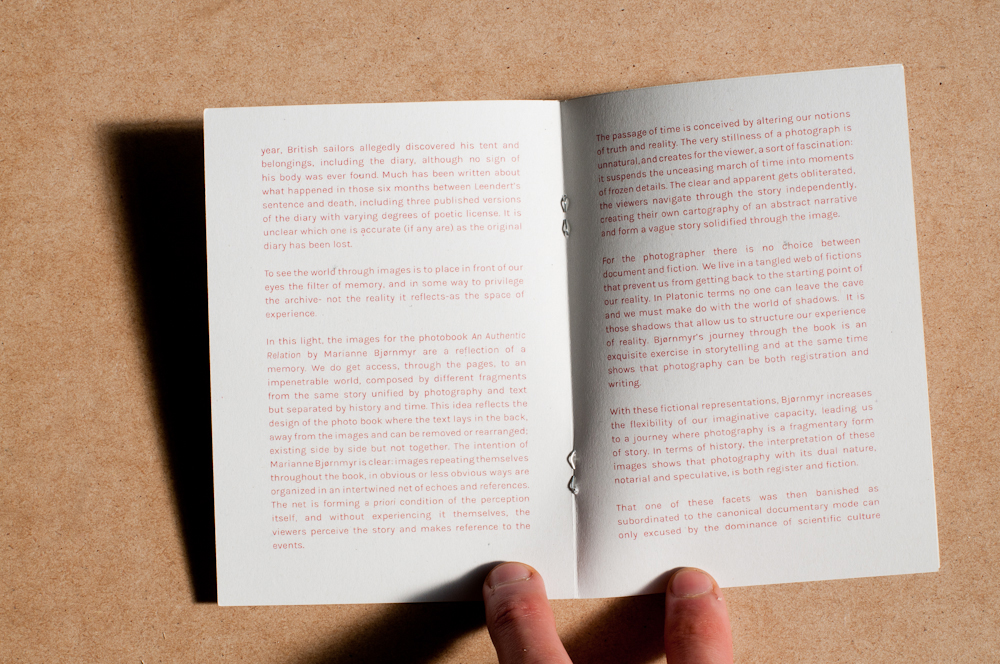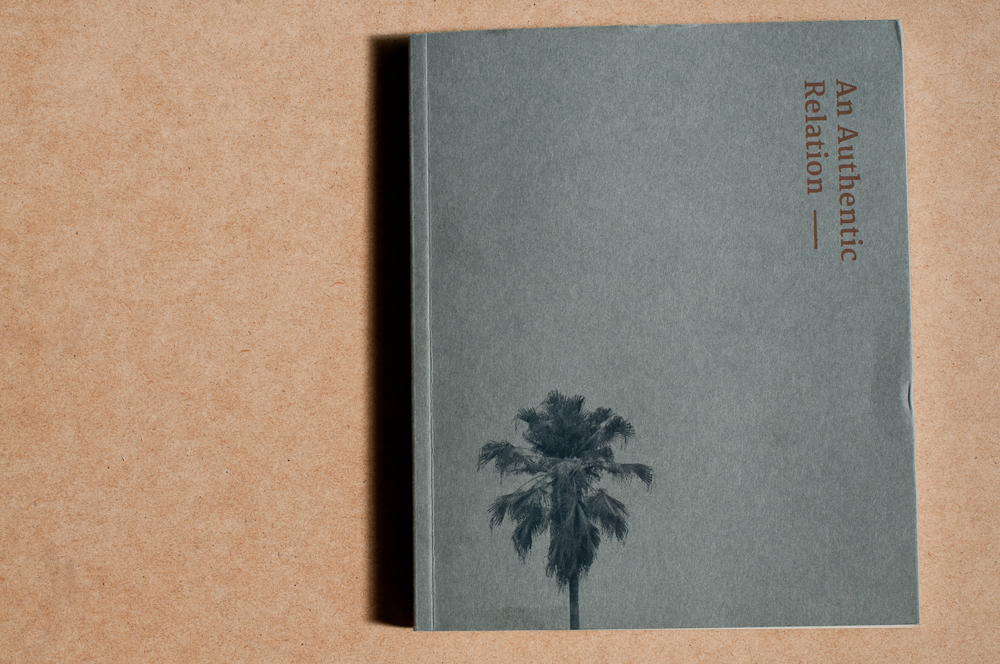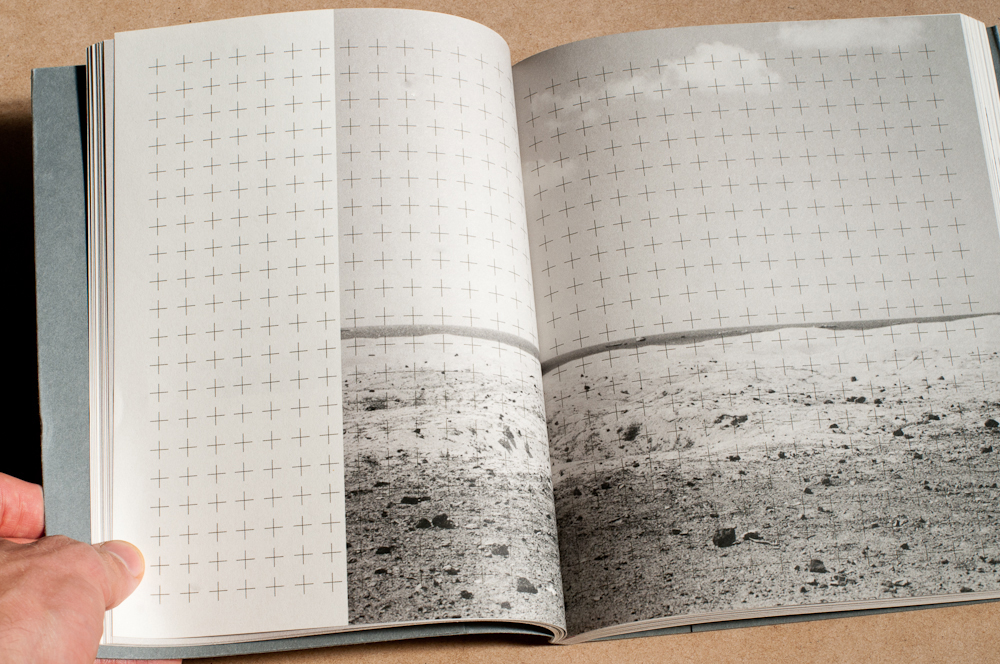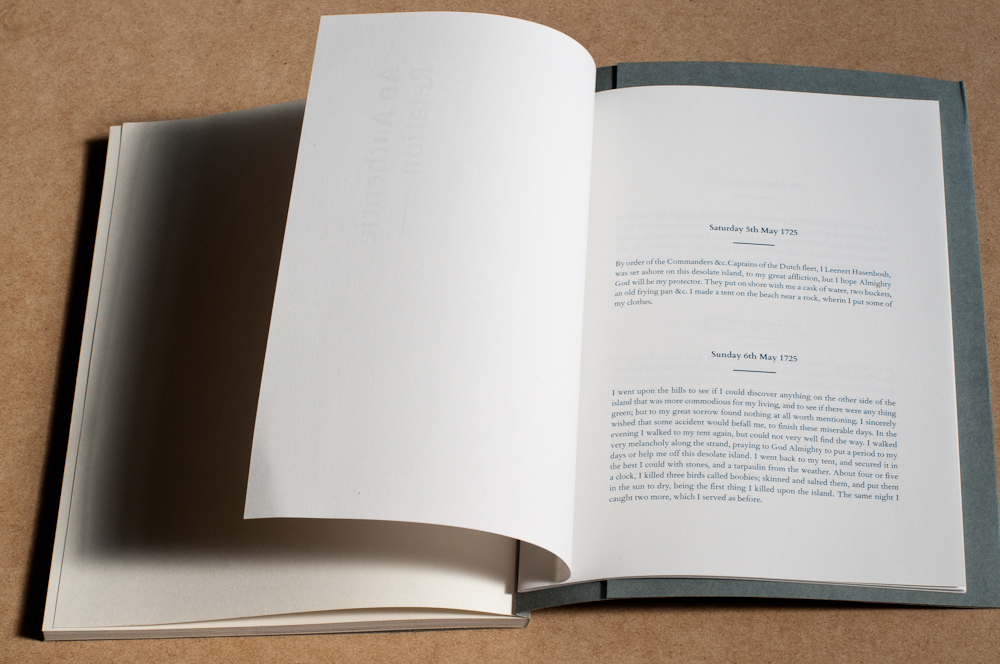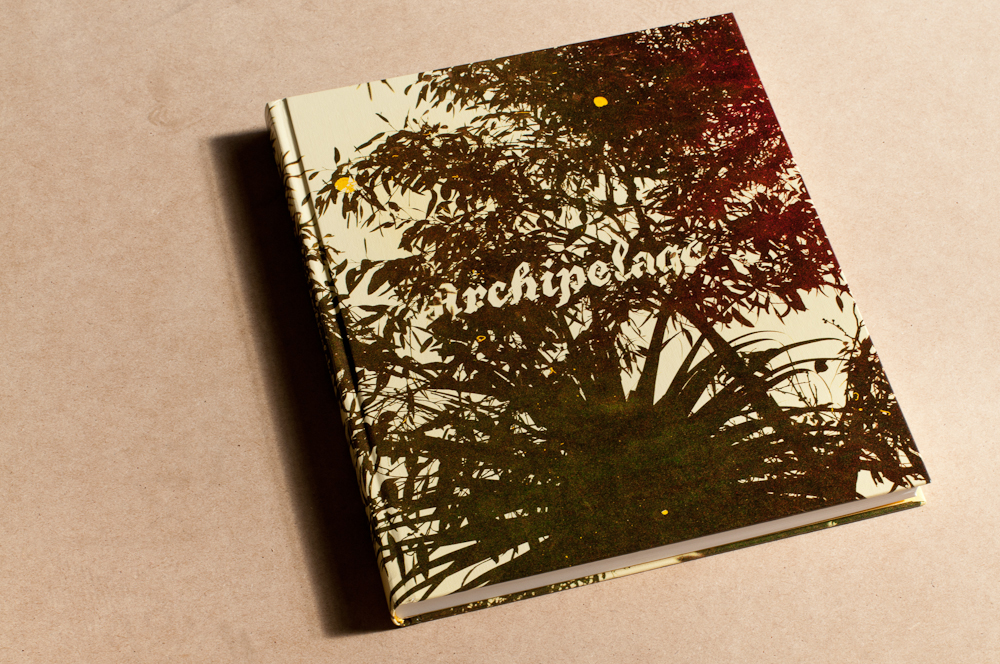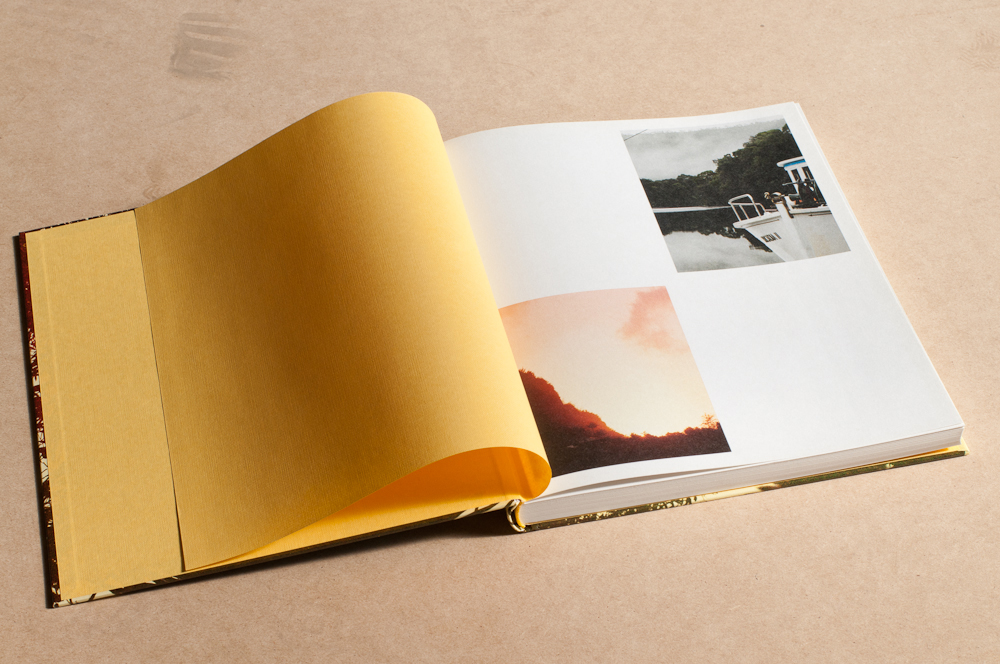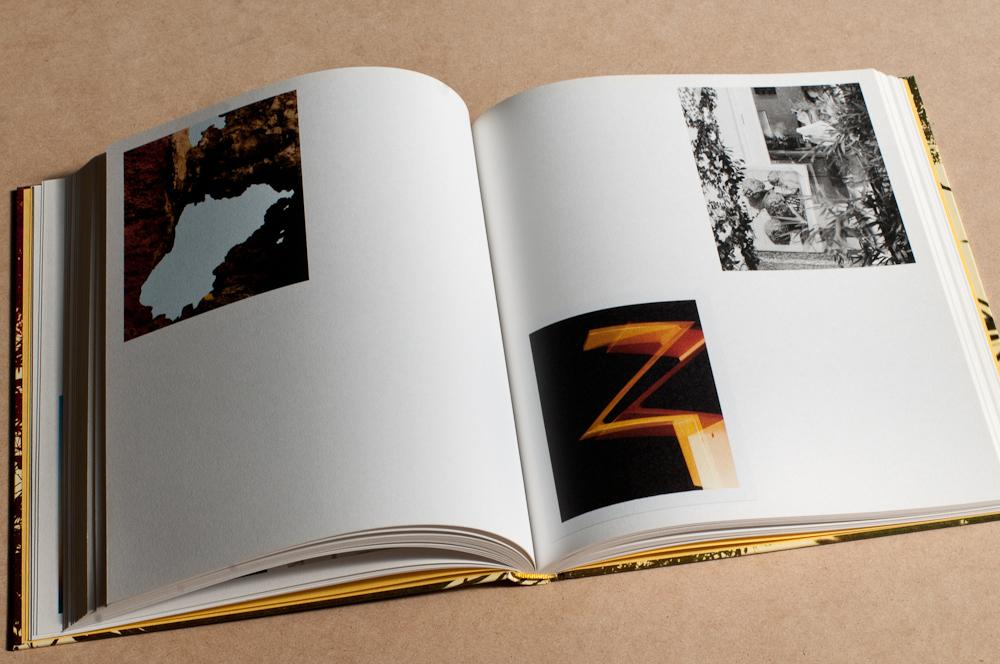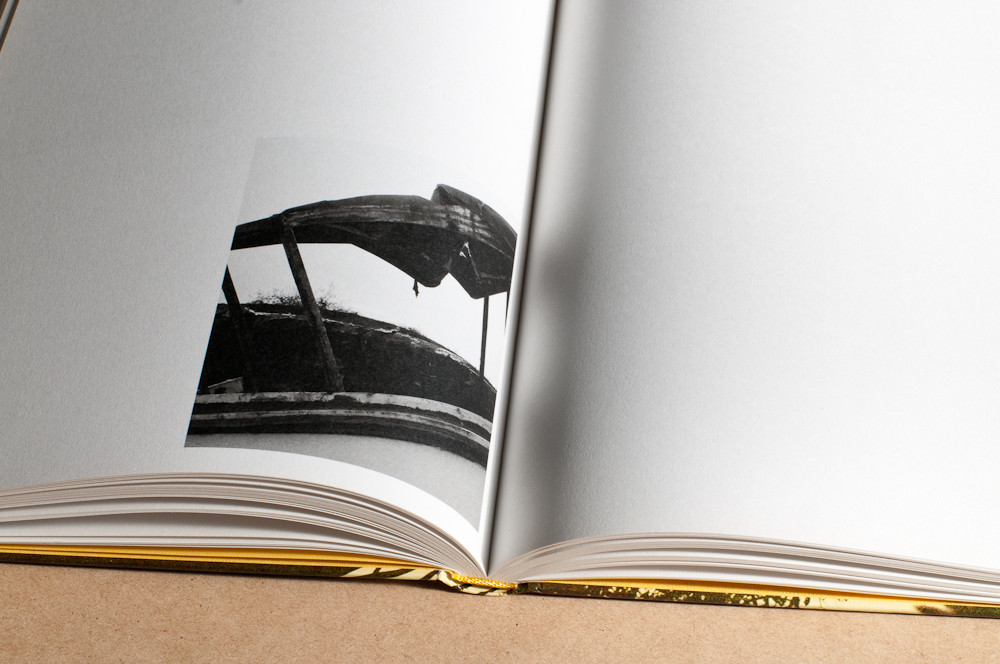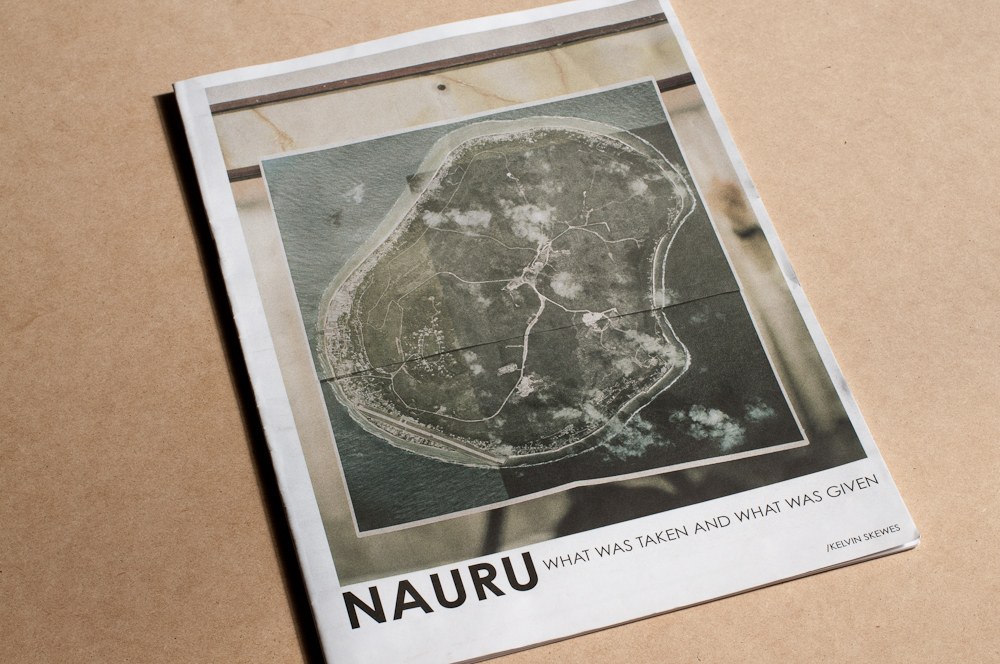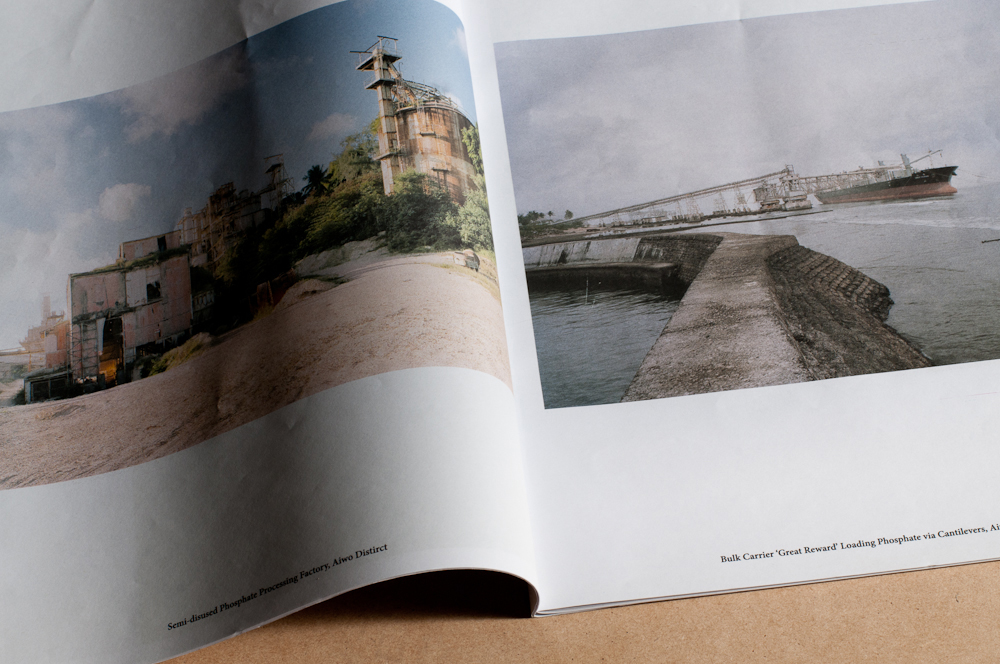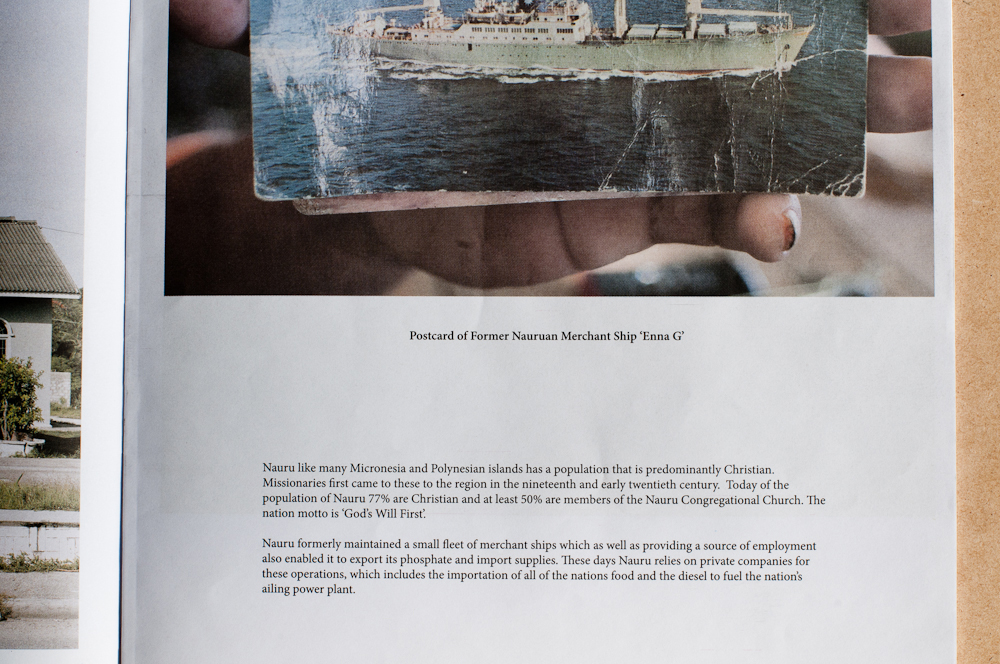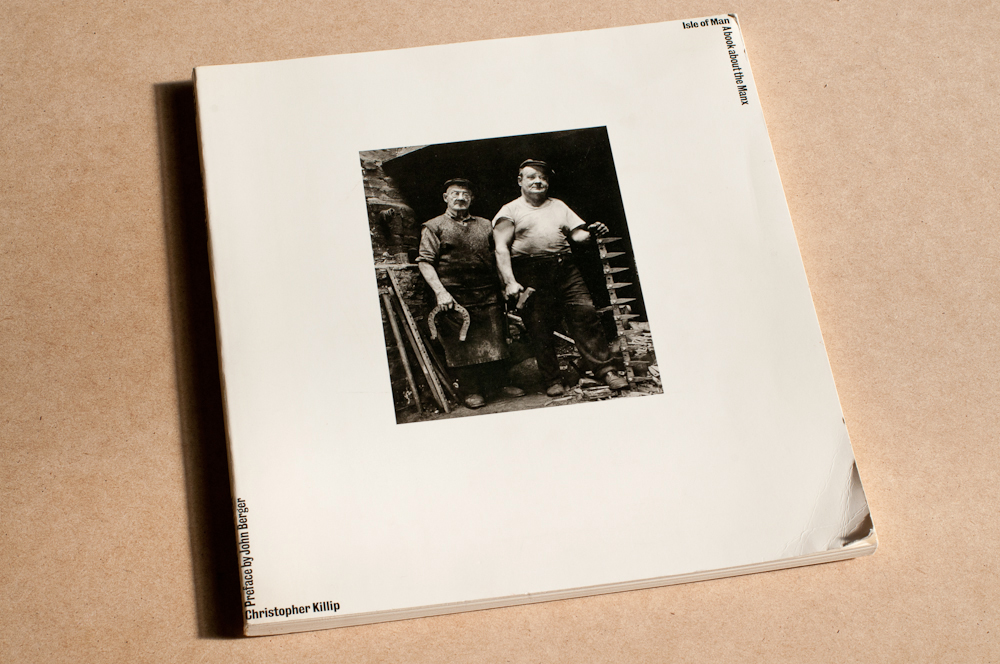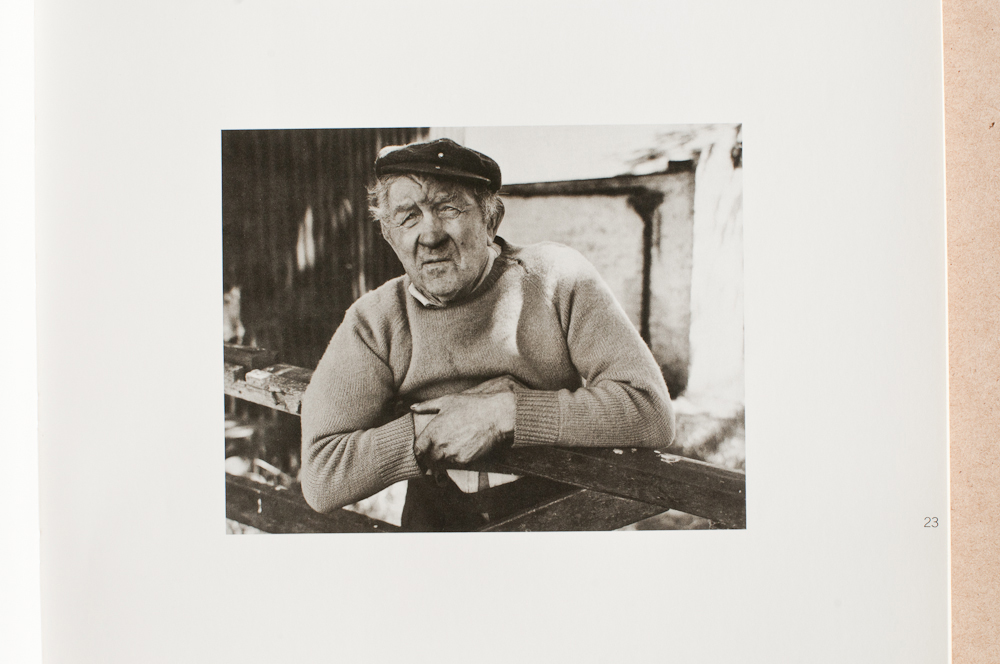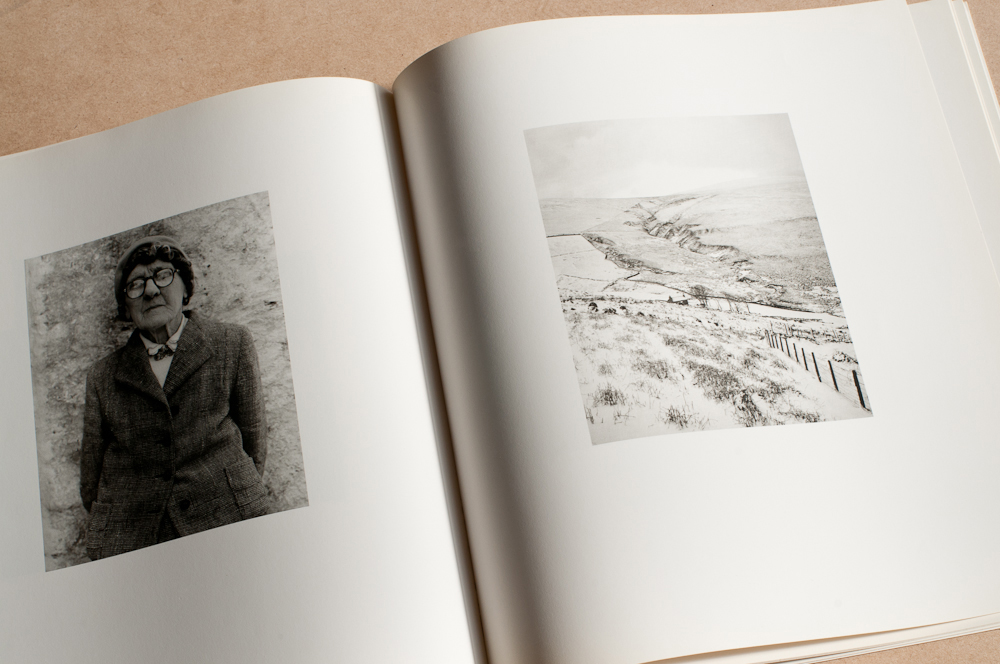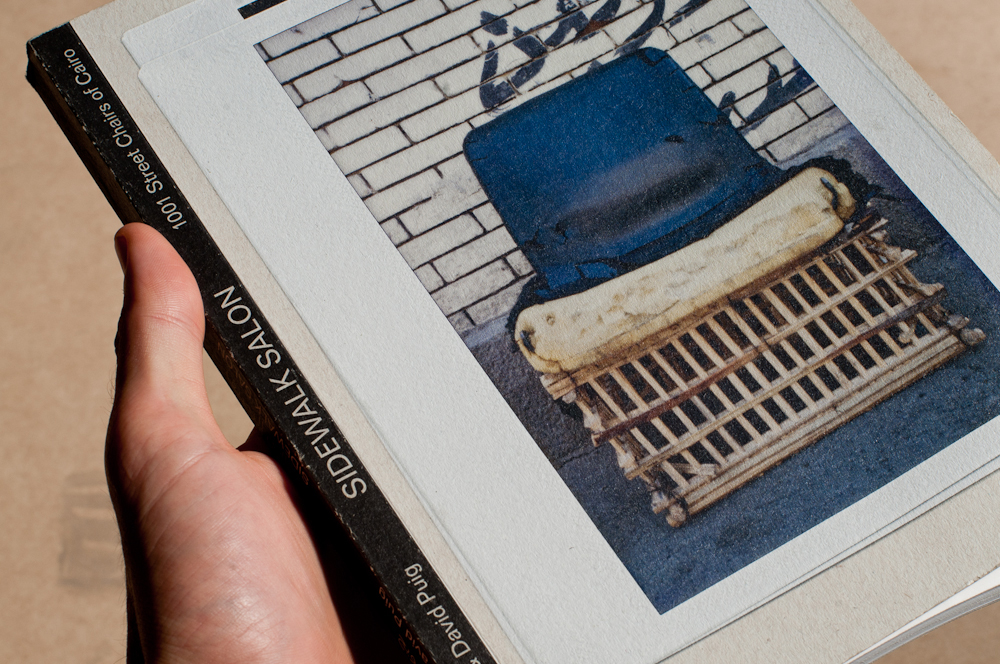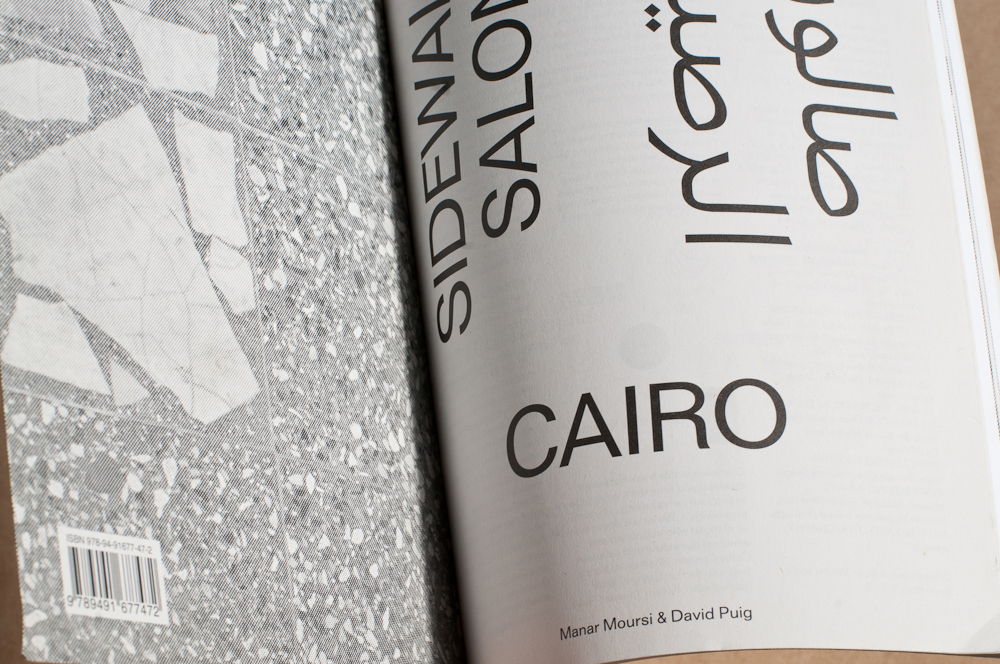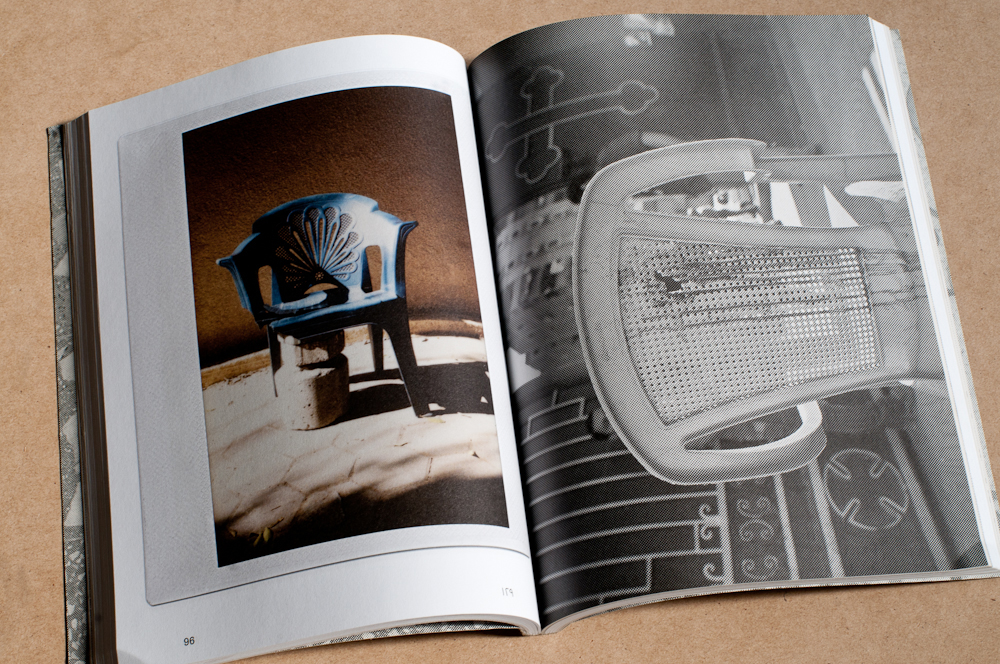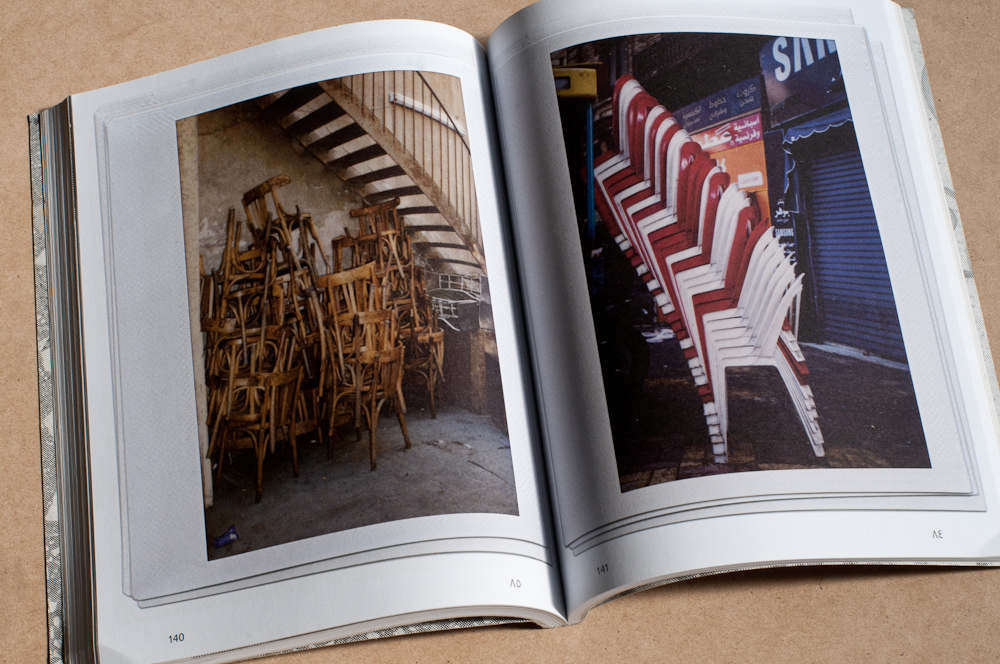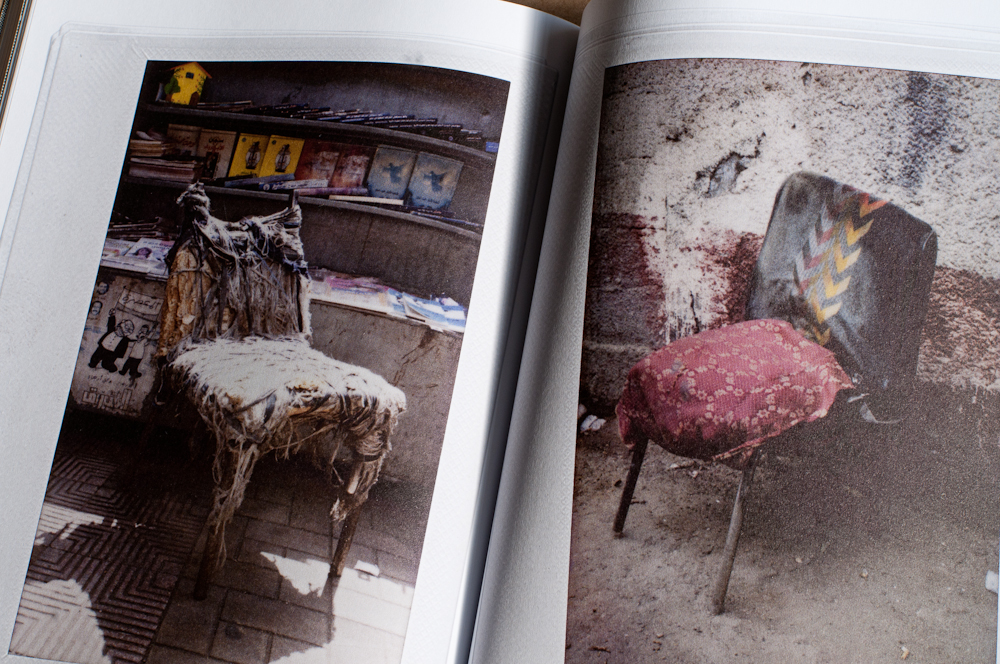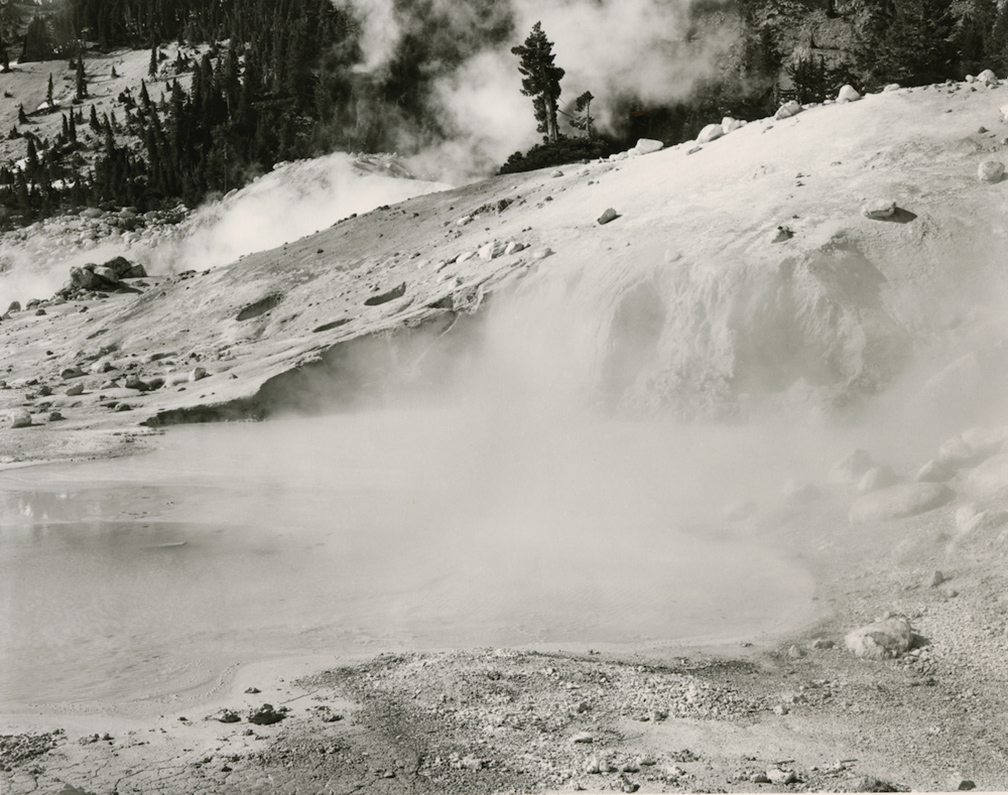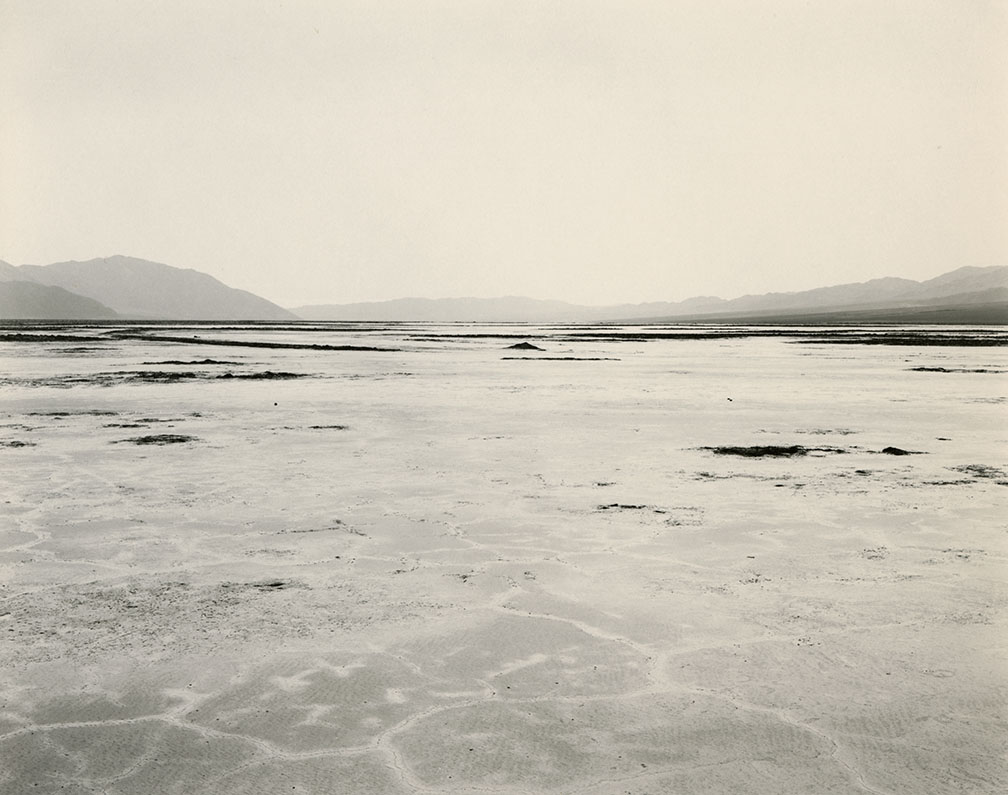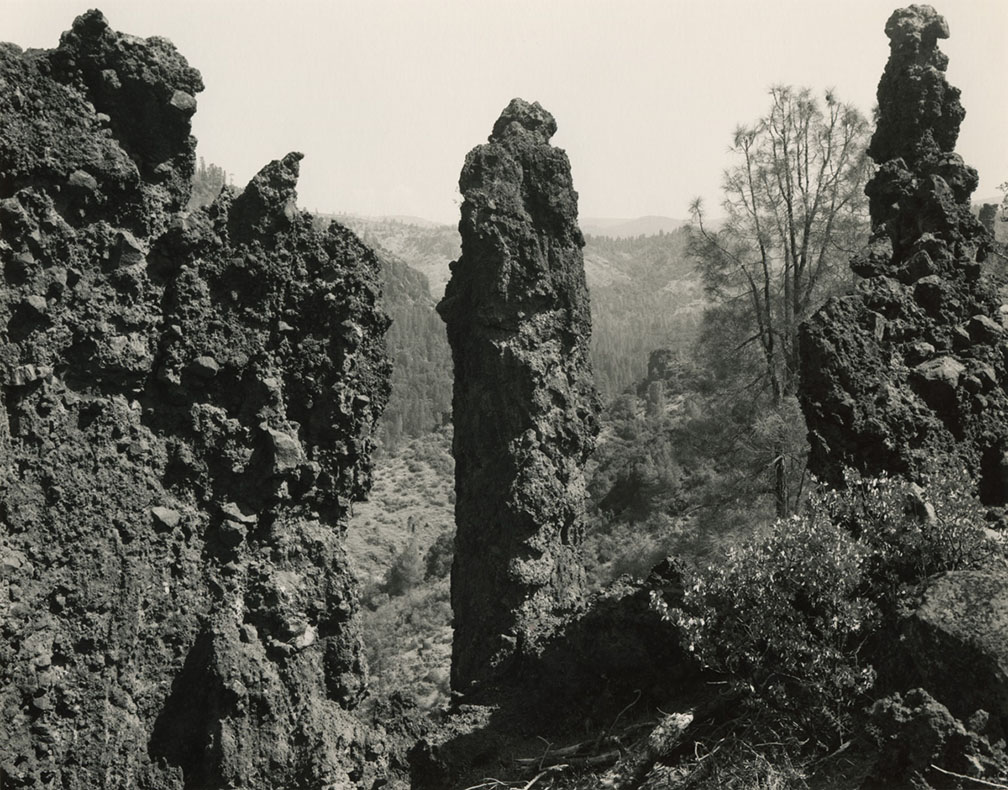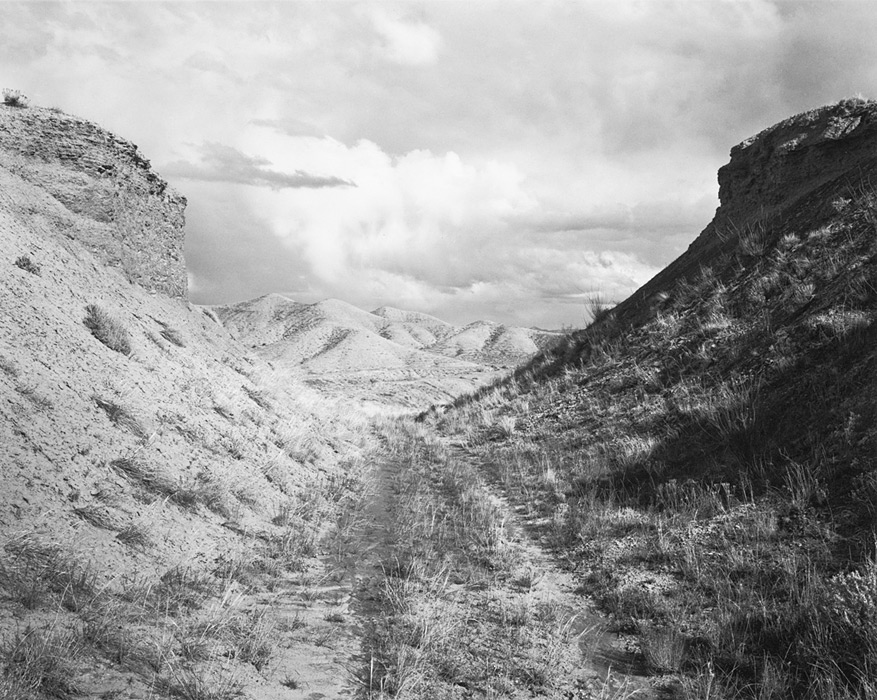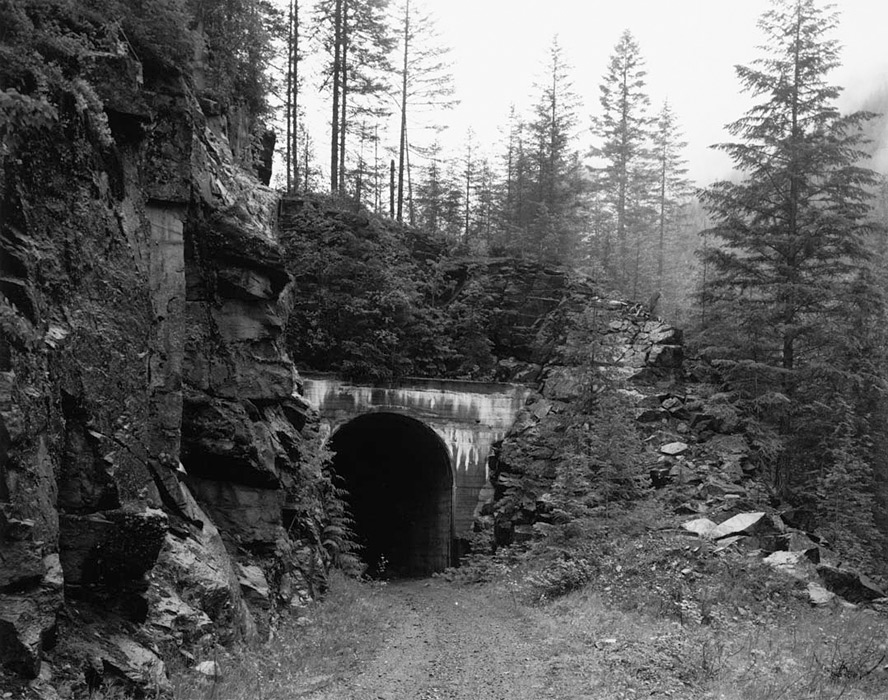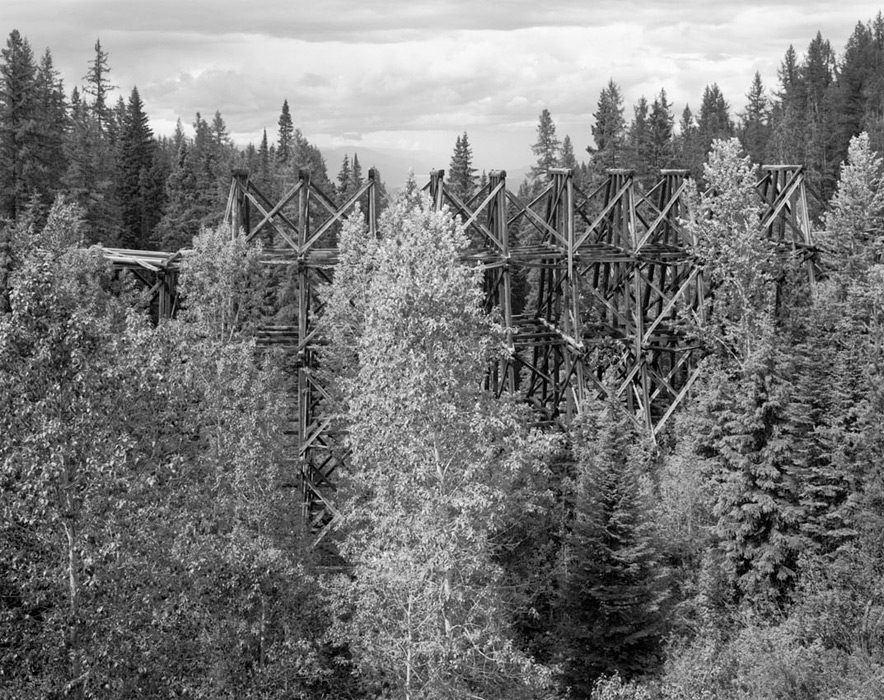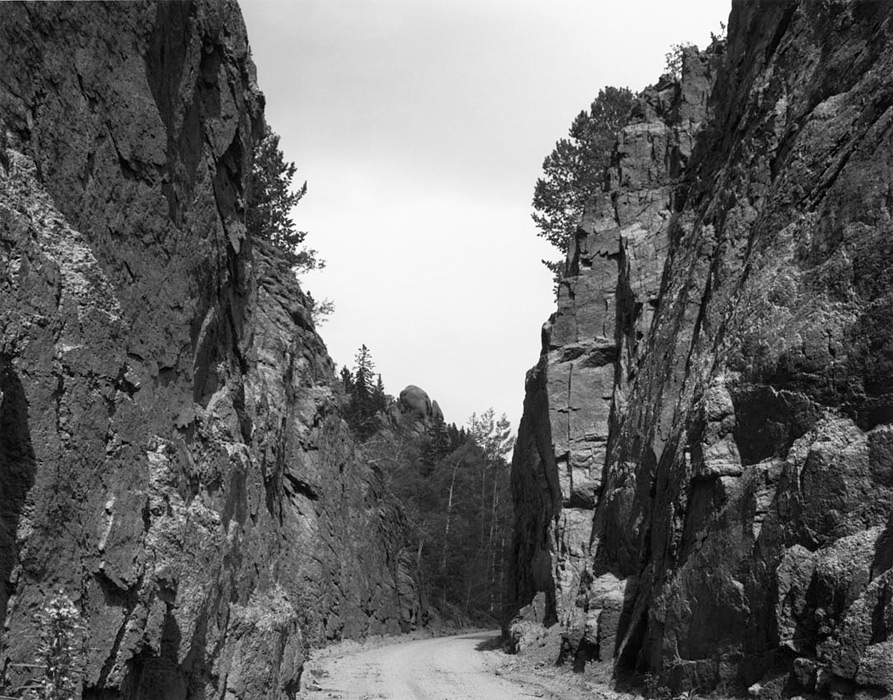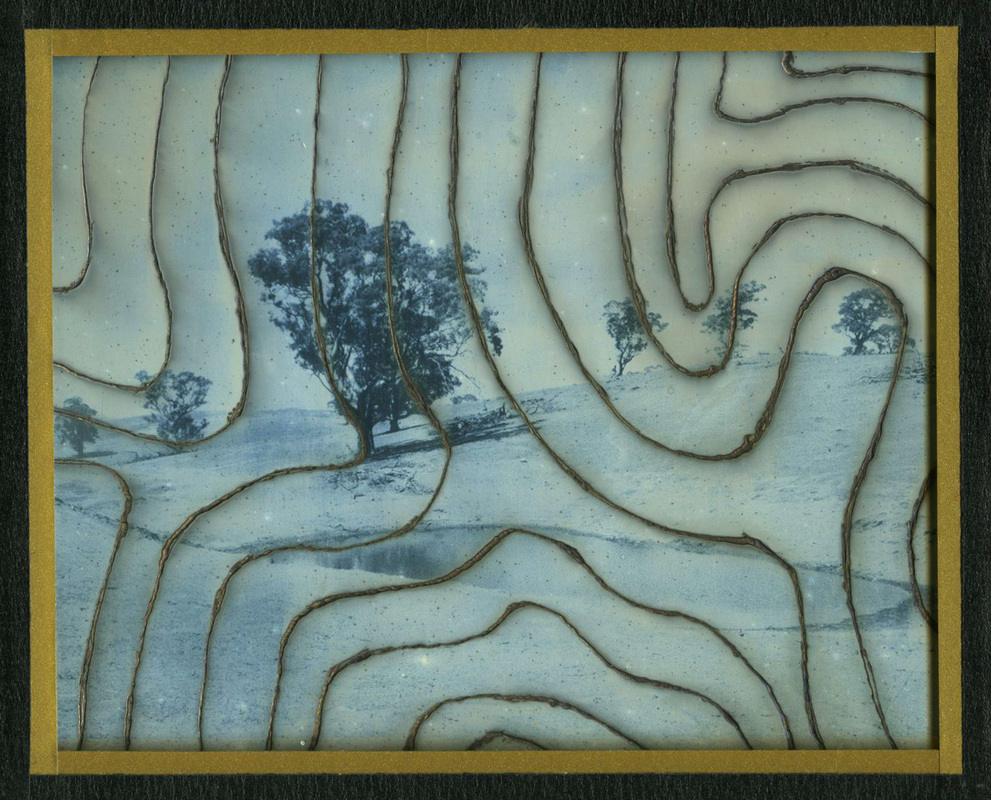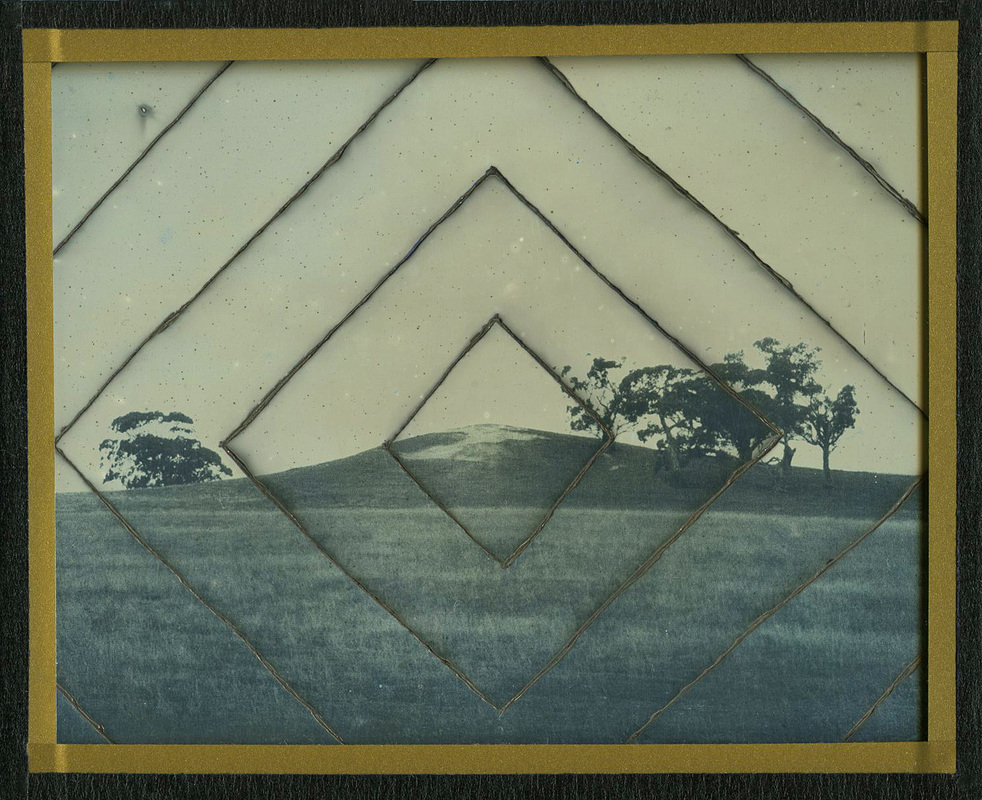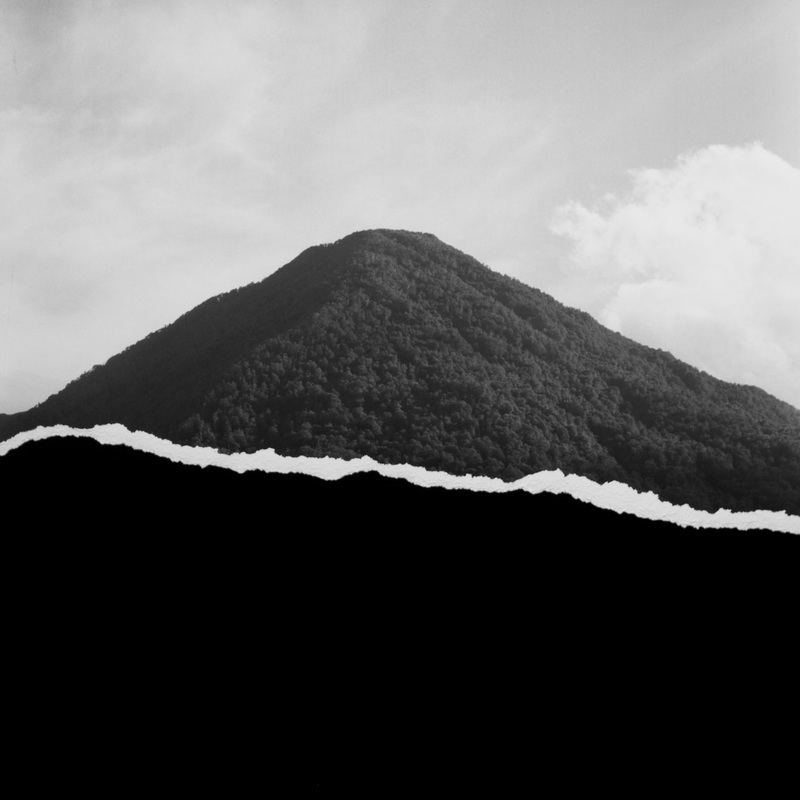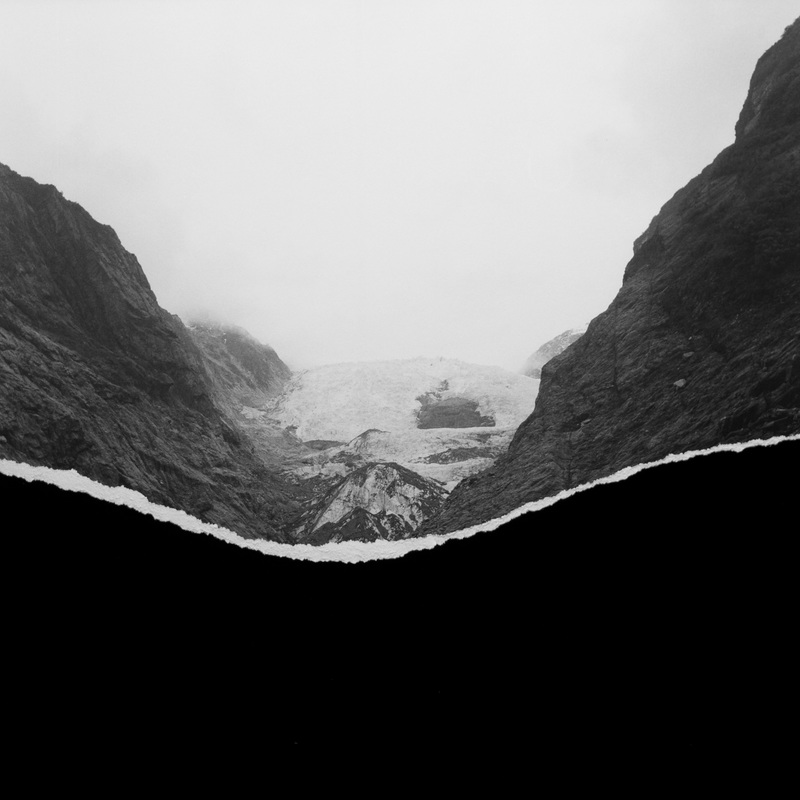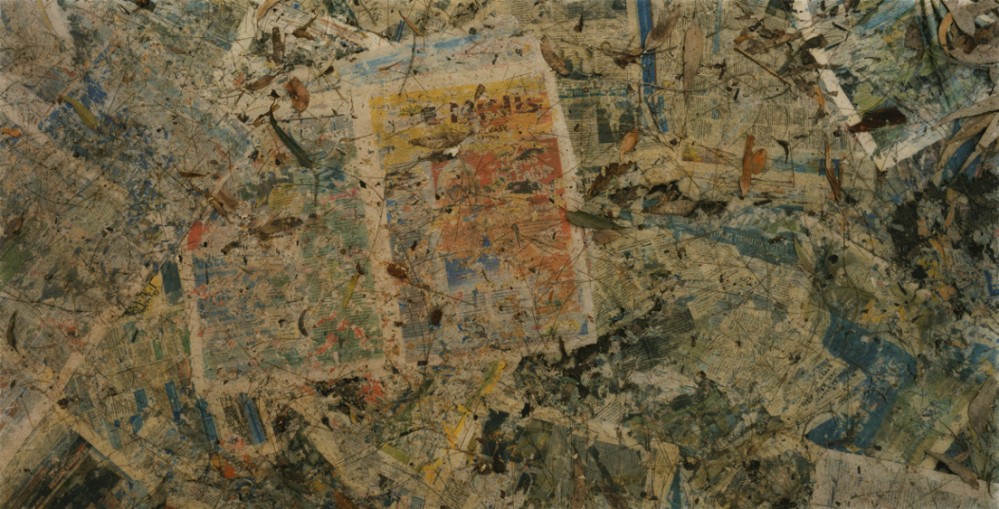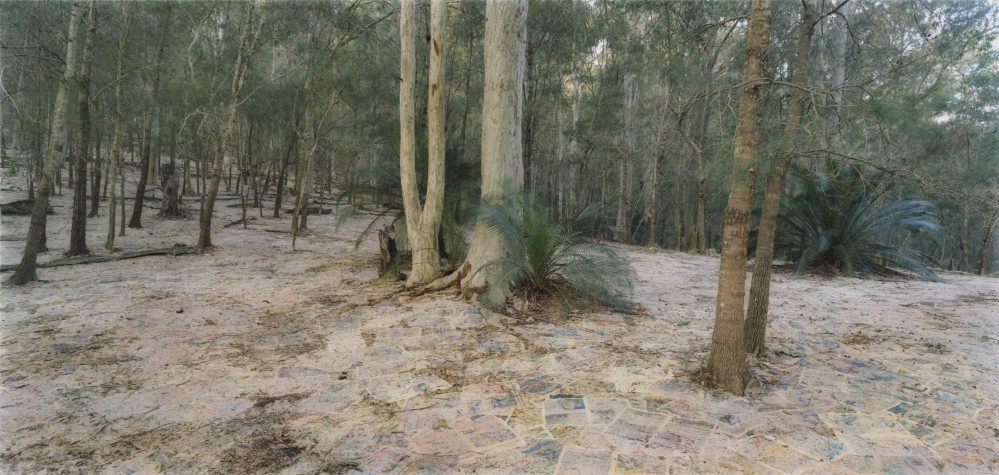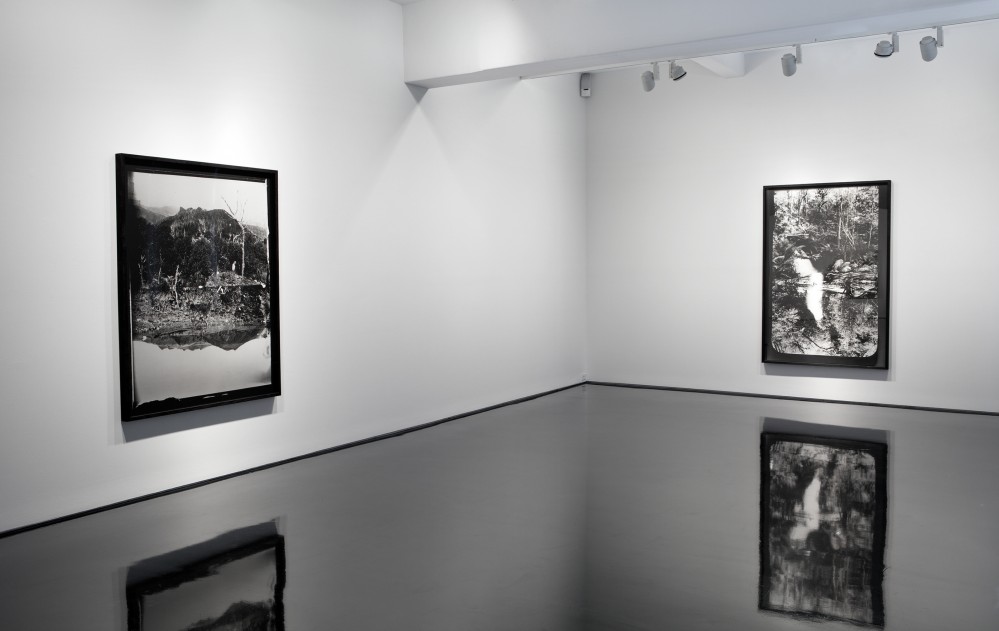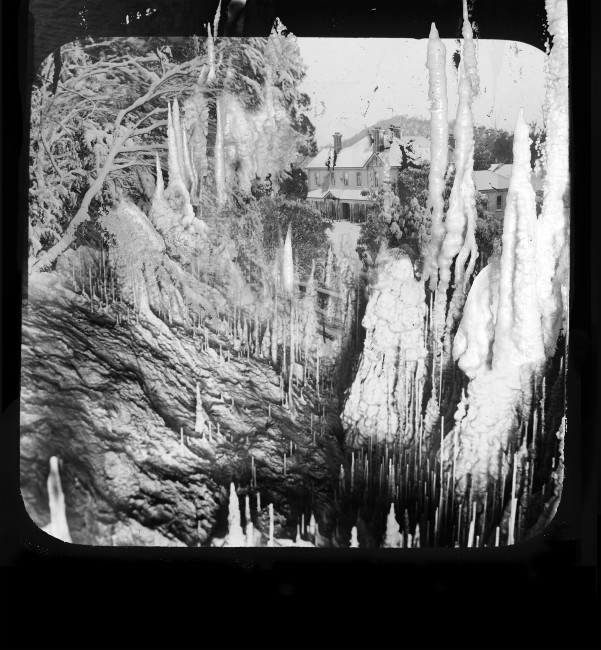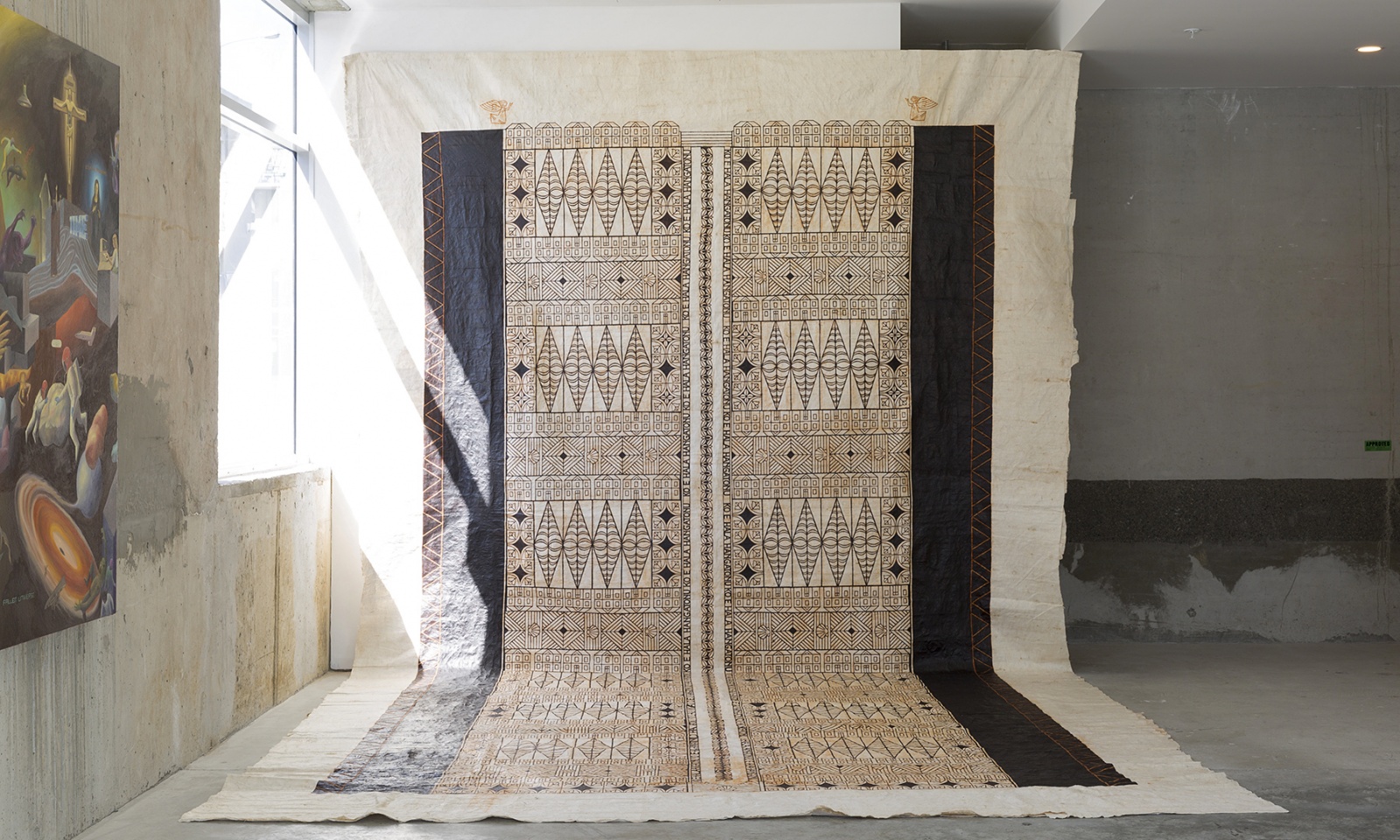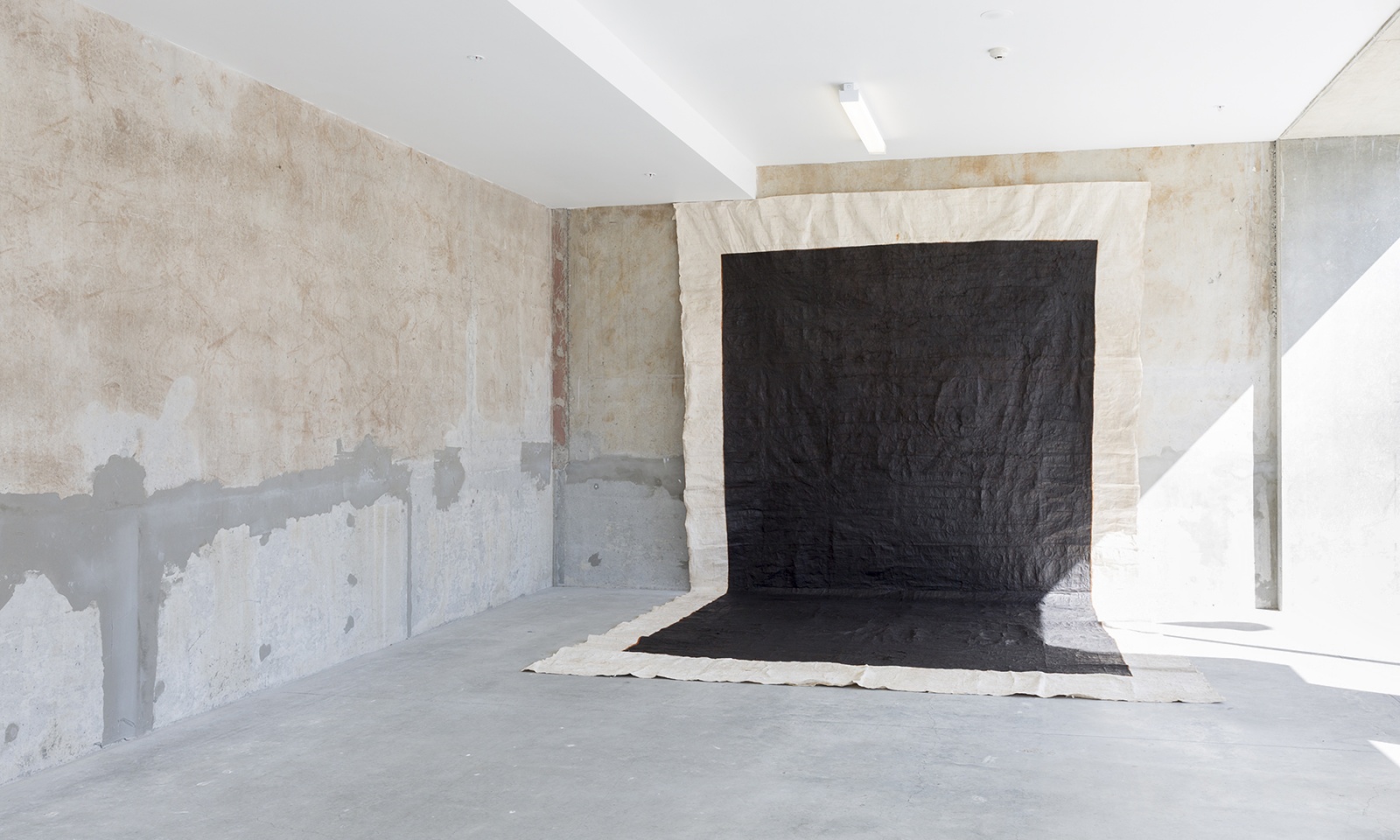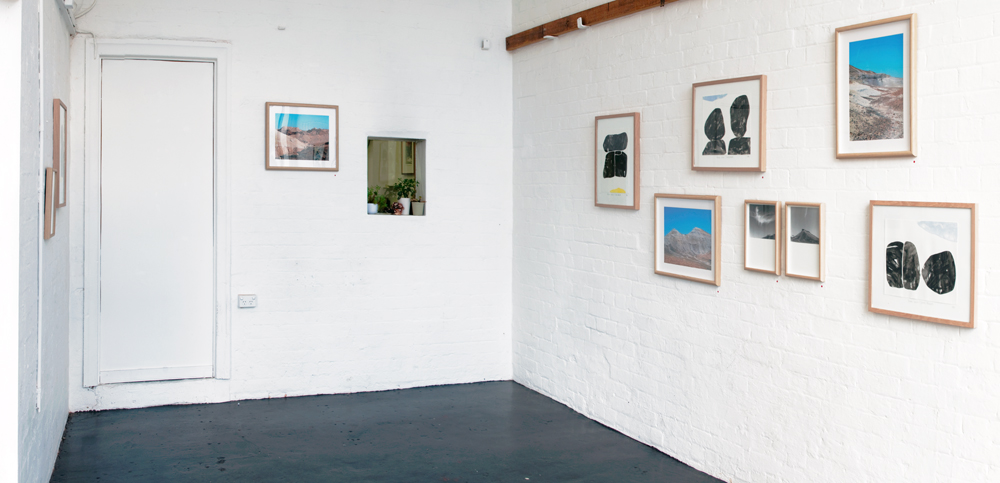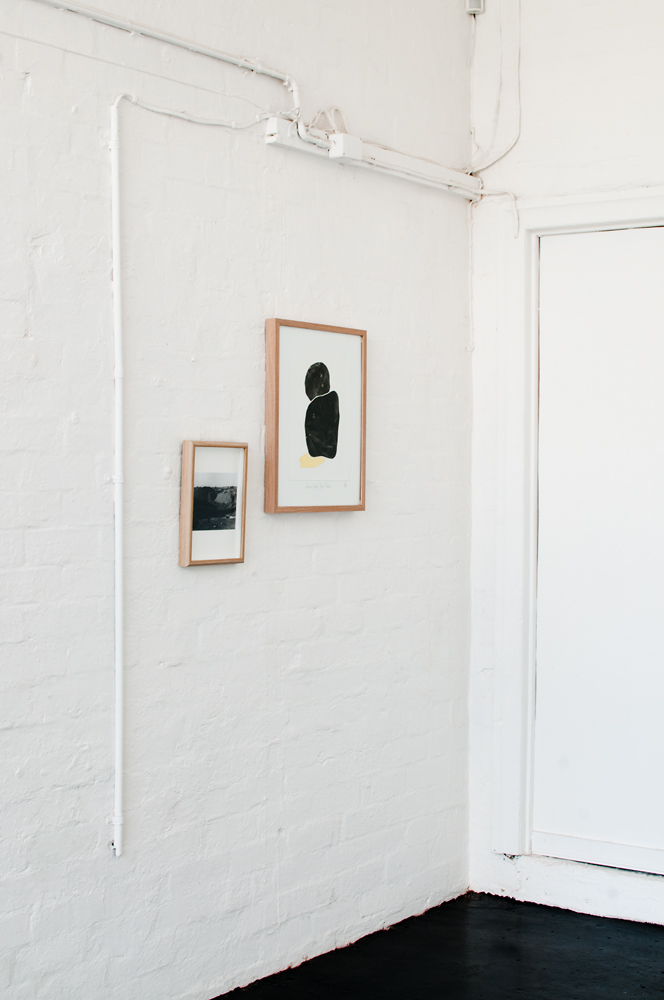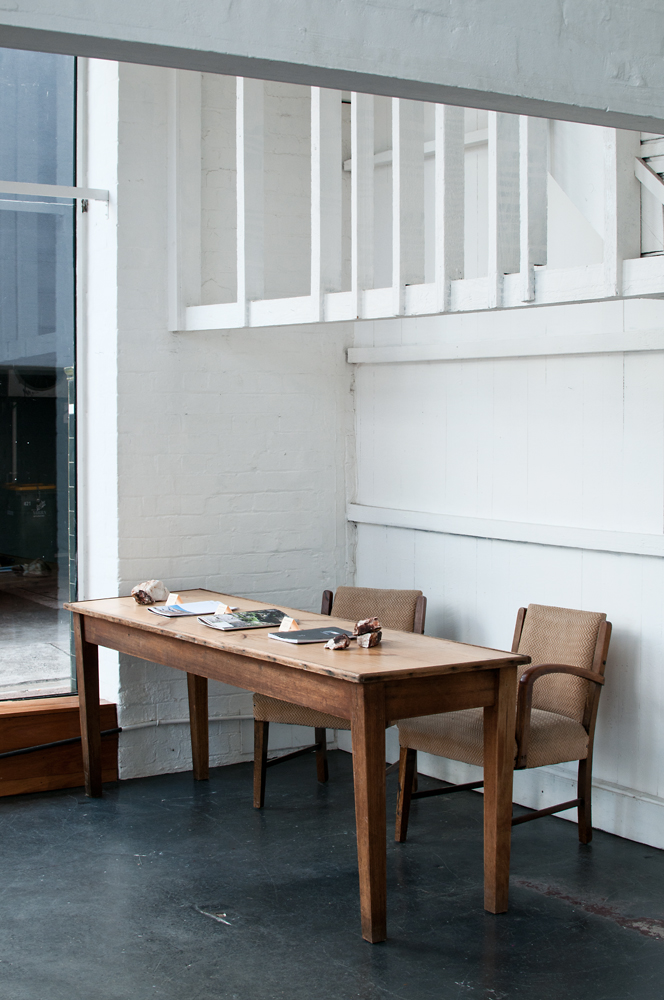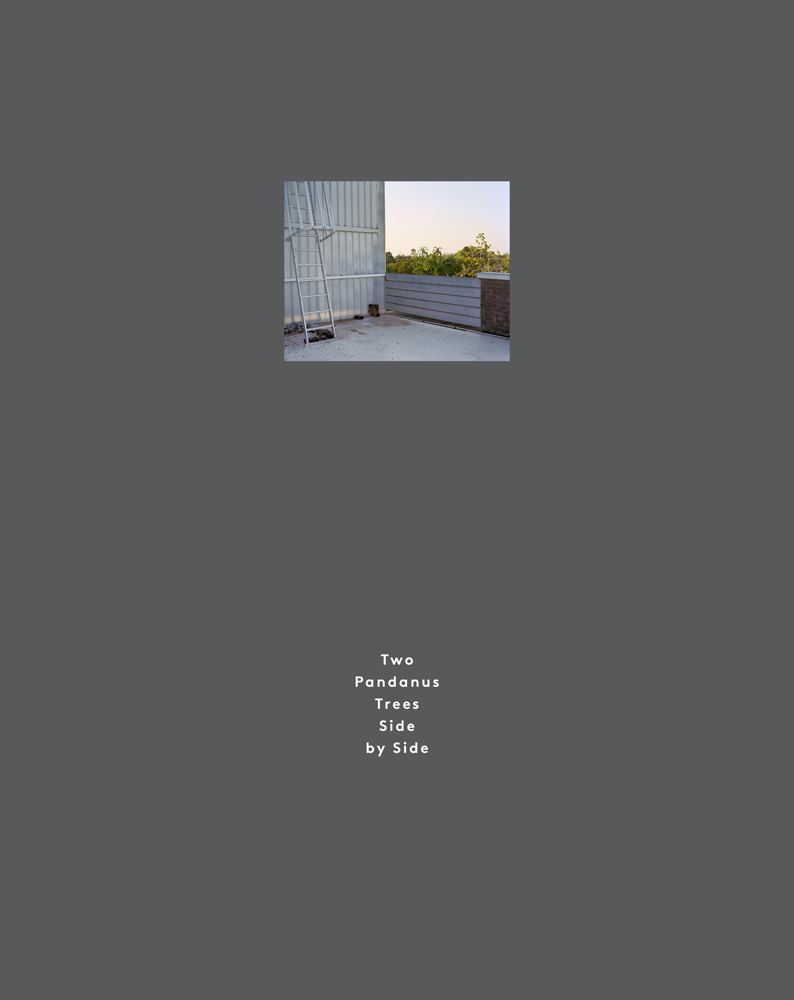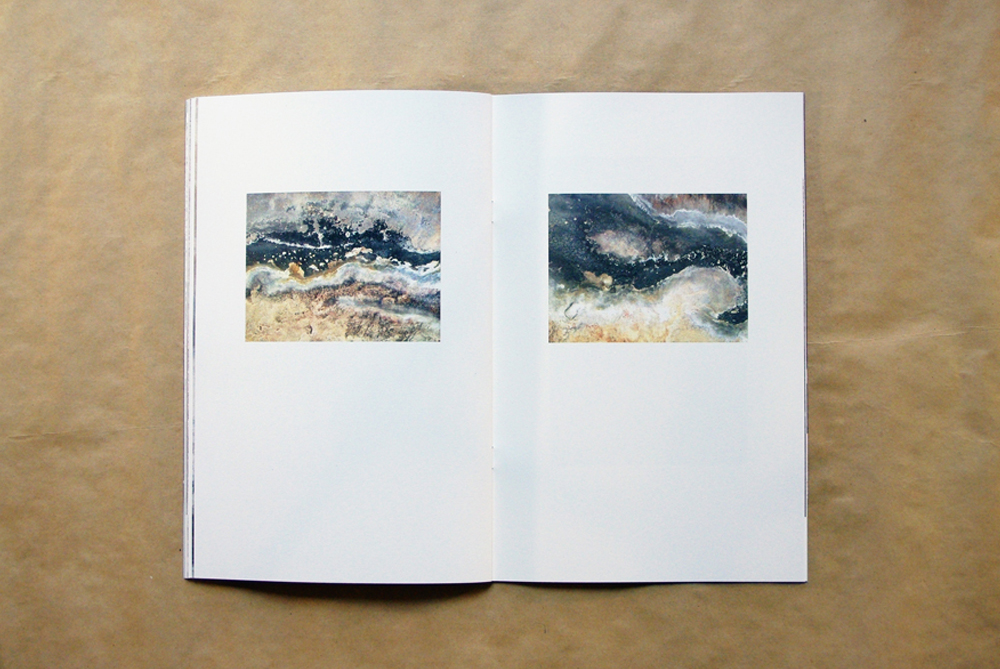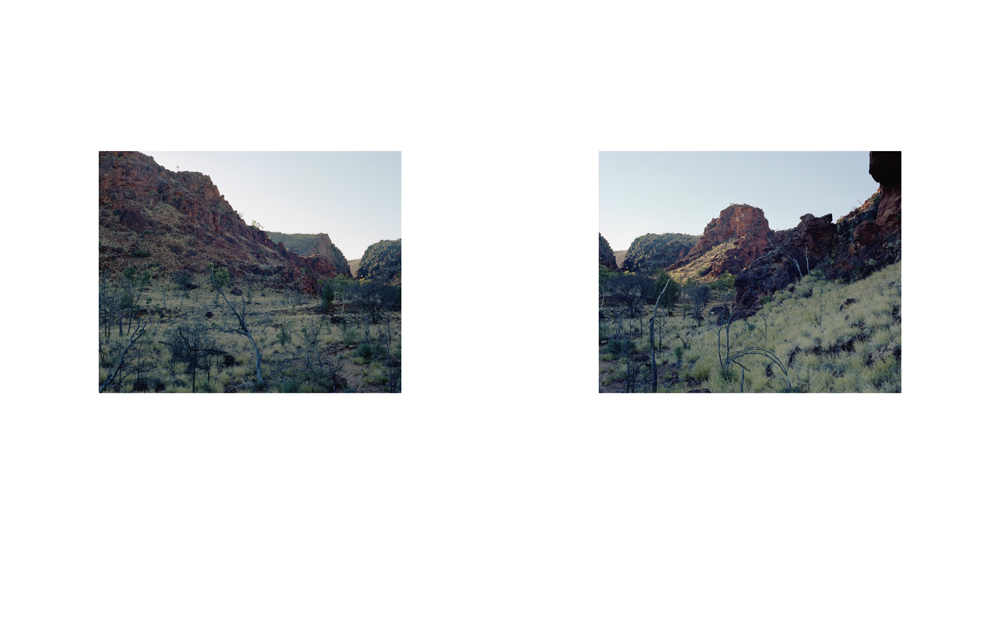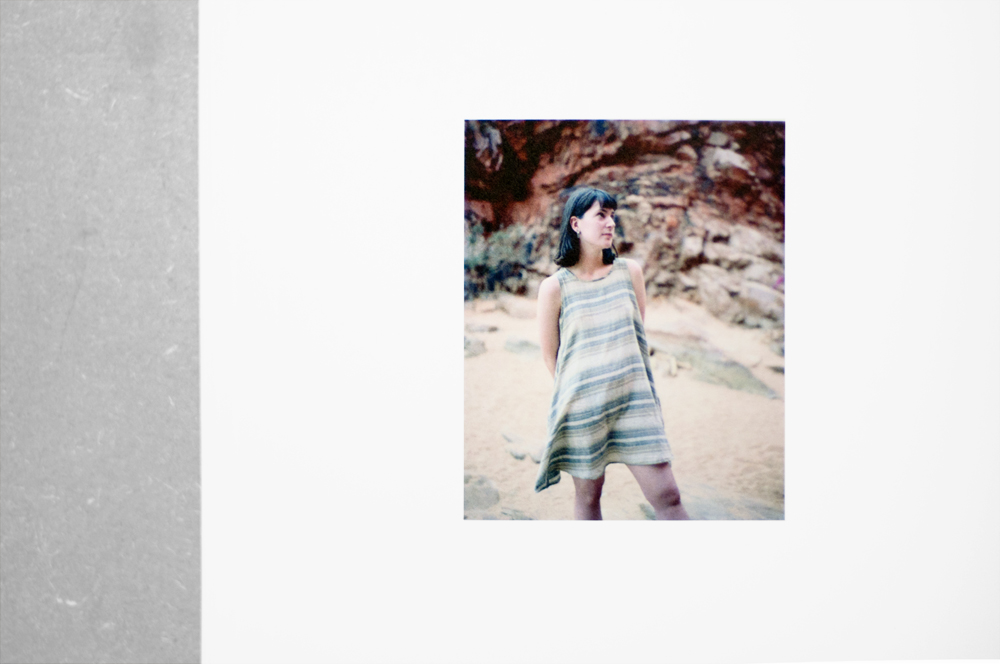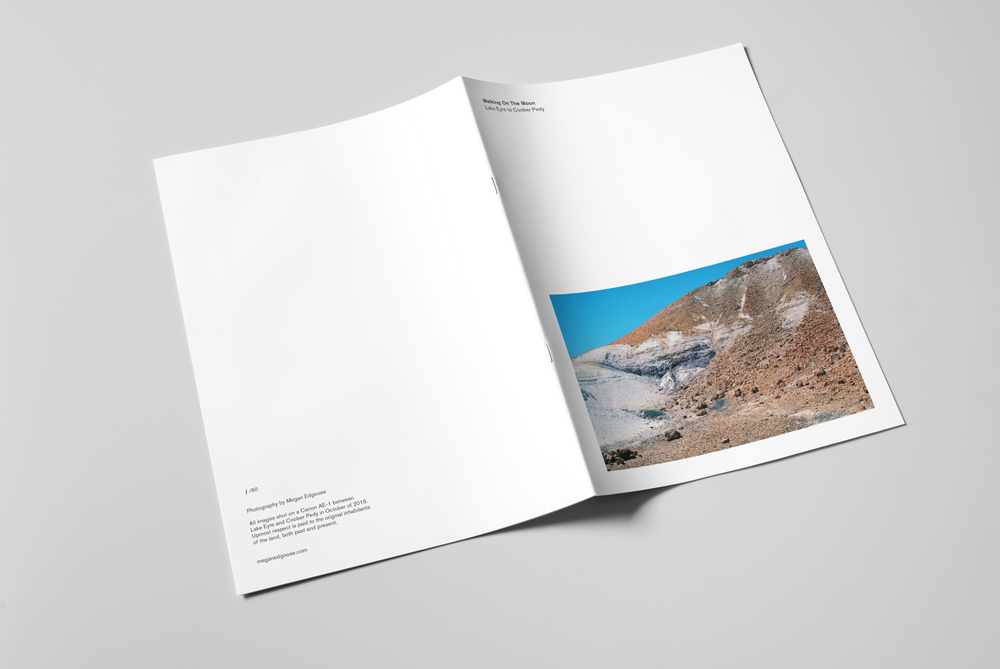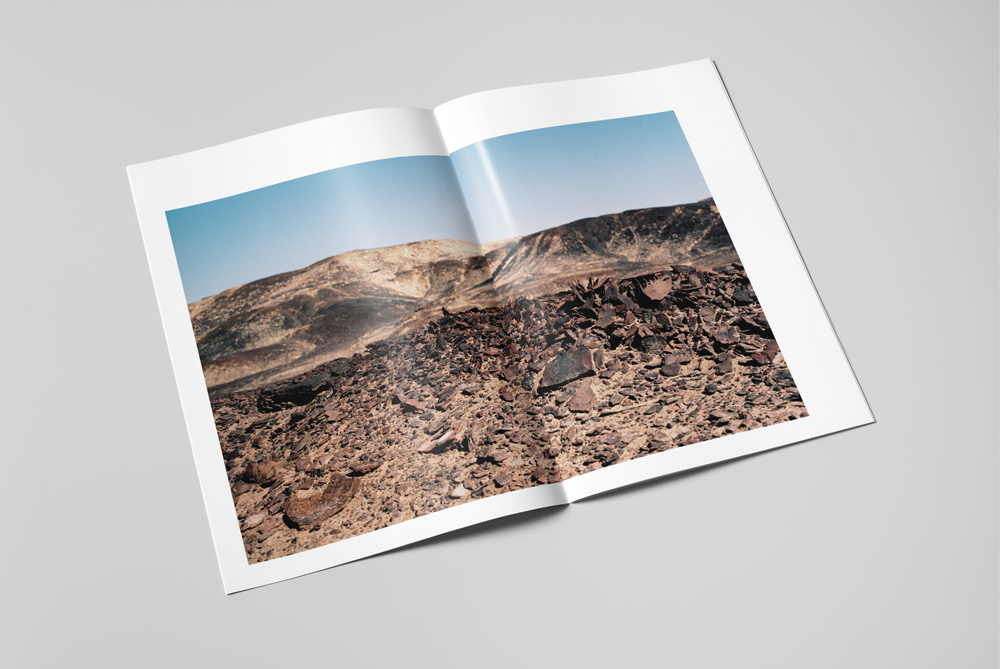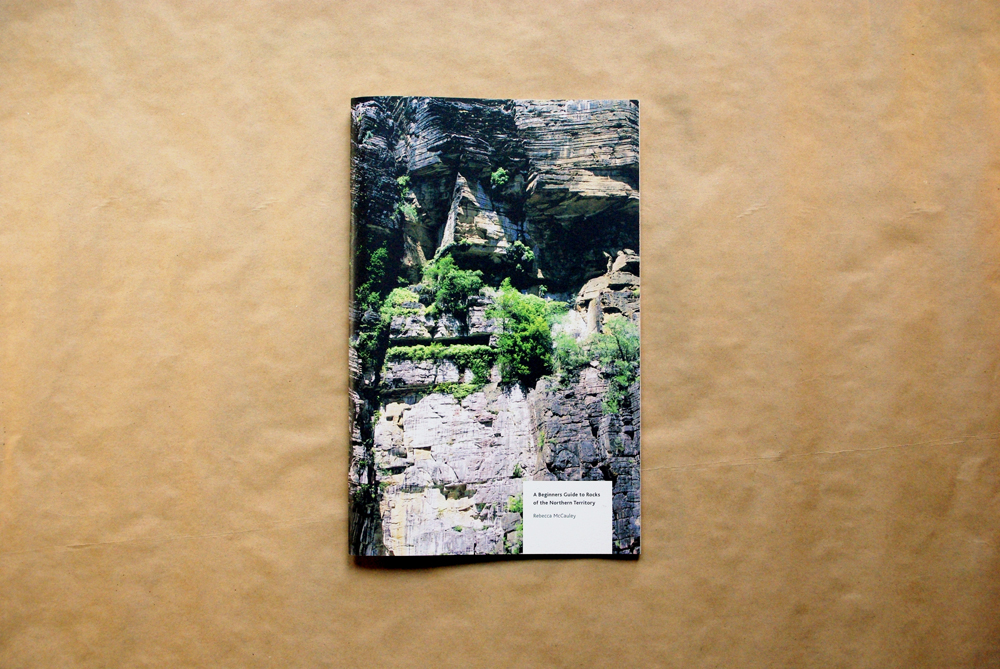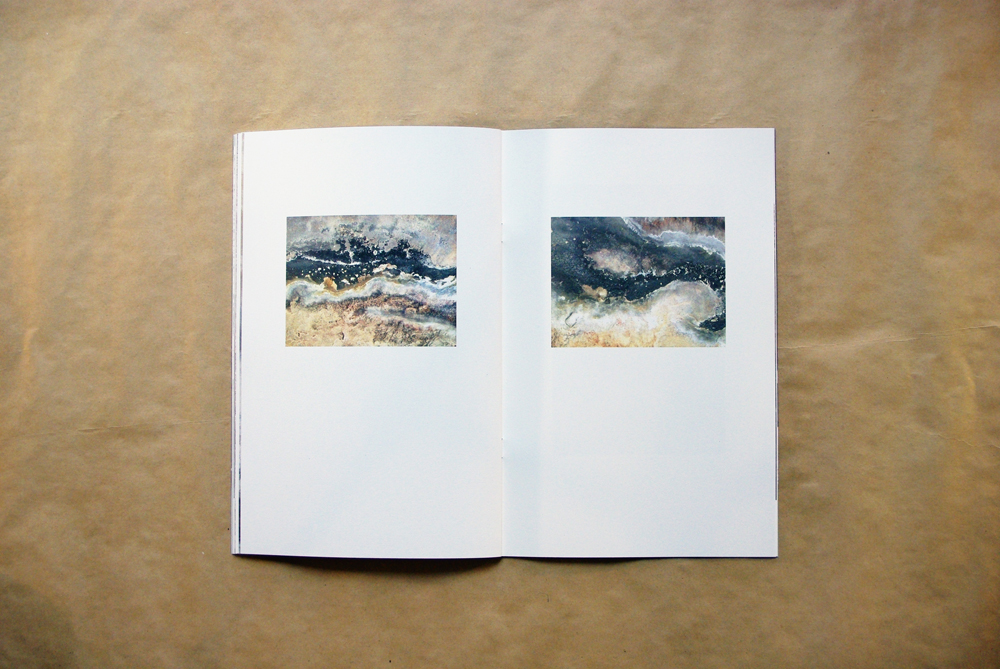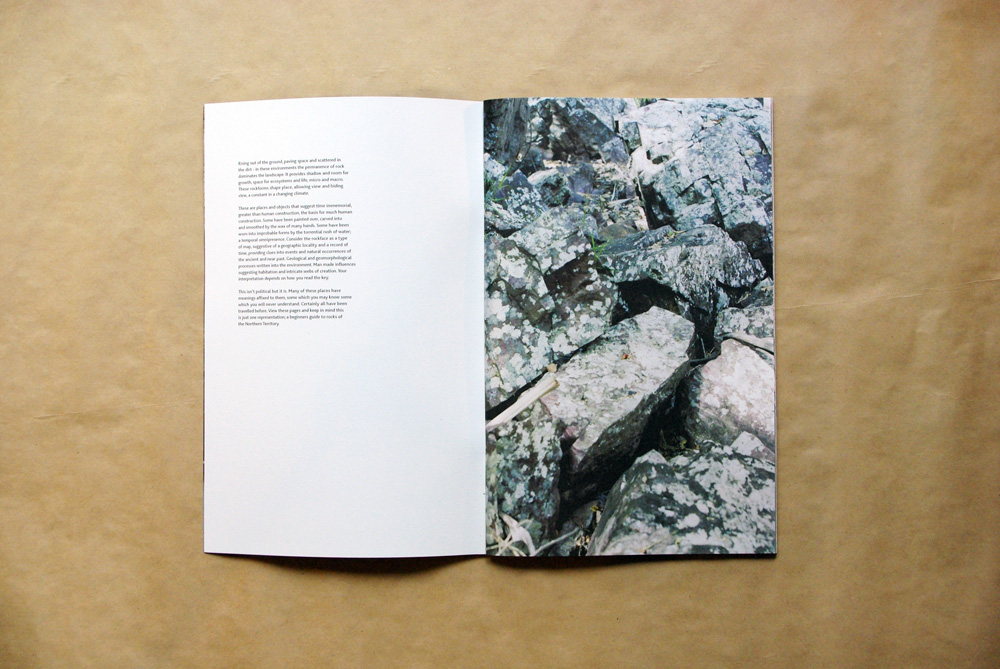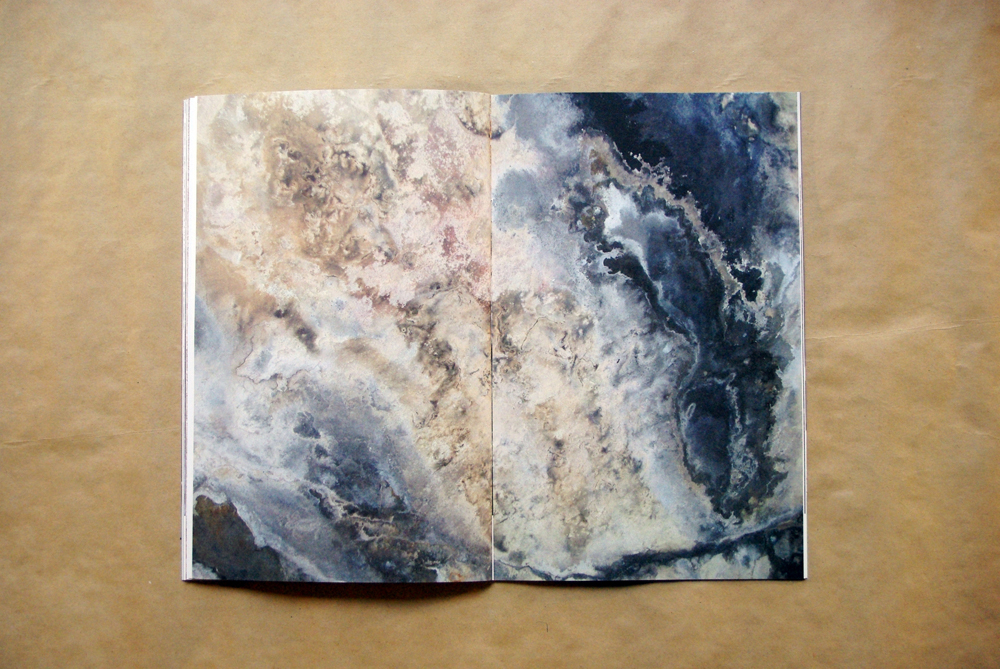Guanyu Xu
Artist Feature
Every week an artist is featured whose single image was published by Der Greif. The Feature shows the image in the original context of the series.
Aaron Claringbold - Two Pandanus Trees Side by Side
Feb 22, 2017
Featured is a selection of images from an amorphous body of work I have been collectively referring to as ‘Two Pandanus Trees Side by Side’. This is a series of images made in response to the interior Australian landscape and the experience of traveling through it and thinking about it as an outsider. The vast majority of people living in Australia reside in the major cities along the coastal regions, like my self, and view the centre through a mixture of mythology and romanticism. The ‘outback’ is presented to the generations above me as the scene or setting for the quintessentially ‘Australian’ tourism experience, the same line sold to overseas travellers. For younger people, my generation and below, it is understood more as a rite of passage – a ‘once in a life time opportunity’ to get to know your own country. In both cases the root mythology of terra nullius – that is ‘empty land’ – sits beneath and supports contemporary experiences of the ‘outback’ facilitating, shaping and repeating a certain settler-colonial experience of conquest – in this case of the elements and inhospitable conditions.
In February of 2016 I self-published a book under the name ‘Two Pandanus Trees Side by Side’ featuring an extended iteration of this work developed specifically for the book form. In being given this opportunity to feature my work I struggled at first with trying to reduce and translate the content and sequencing of the book work into a small selection of images to be shown in this online context. After trying and failing eventually I went back to my images and decided to try to say a similar thing in a different, and more direct way – better suited (hopefully) to the format and nature of online viewing. This final selection includes a number of images not included in the book or previously shown within the scope of the project.
Artist Blog
The blog of Der Greif is written entirely by the artists who have been invited to doing an Artist-Feature. Every week, we have a different author.
Published in:
»Der Greif #9«
Black and White
Feb 28, 2017 - Aaron Claringbold
This is a selection of images from a new body of work I am developing. Some of these images were taken during the trips that lead to ‘Threeways’ and ‘Two Pandanus Trees Side by Side’, and some have come from more recent travels, attempting to expand and develop on the aesthetics and content of the pervious works. It feels a little strange sharing uncompleted and in progress work, though hopefully it helps me to work through the images and ideas.
The first image pictures was published in Der Grief #9 and was originally attributed to ‘Two Pandanus Trees Side by Side’, when it existed only as a large body of work. After developing it into book form and separating out the black and white images I started to view them as part of a different outcome/output if not a different entity altogether. This new project is as of yet untitled. I have a considerable selection of work and am at the stage where I am just playing around with the selection and sequencing, trying to work out what feels right.
Photobooks
Feb 27, 2017 - Aaron Claringbold
In the above gallery I have included images of some of the photobooks I have and return to most often.
Marianne Bjornmyr – An Authentic Relation
Matthew Porter – Archipelago
Kelvin Skewes – Nauru : What was taken and what was given
Christopher Killip – Isle of Man : A book about the Manx
Manar Moursi & David Puig – Sidewalk Salon : 1001 Street Chairs of Cairo
Of these books, Archipelago is probably the one I come back to the most, and which appeals to me in a very specifically photographic way. Here is some text taken from one of the two essays within that book.
To photograph the world today, to be a contemporary photographer, means to confront and comment upon this condition in which knowing too much and knowing too little invoke the same visceral state. Far from the transparent image, truthful document, or index of time, photographs have come to function more like portals, obliquely suggestive of historical events, modernist styles, and codified genres, sometimes all at the same time. Photography has always lent itself to this air of mystery: it descales, decontextualises, and in framing a scene deviously appears to give us all we need at the very moment it leaves things out.
Indeed, these photographs are at their most frustrating and glorious when puzzling juxtapositions are overlaid with aesthetic coherence, a coherence available to the eye but not to the mind. It is here where the works delay whatever mechanism in my brain jumps from experience to its interpretation. I scantness scenes for a moment, finding that I am soothed by the things I recognise, appeased buy their ghostly yet familiar appeal. I navigate this work with my own personal commas, perception-as-search-engine. But what coheres and what doesn’t in the or that moment matters little in the end. It is the delay that matters, the delay that makes me aware of this conflation between aesthetic judgement and the simple act of recognising something I already know. I find recourse to neither judgment (a coherent proclamation for the future) nor recognition (pleasure in affirming the past). This delay fixes me squarely in the uncomfortable mess that is the present, a condition in which knowing something and knowing its meaning are far from the same thing.’
Excerpt from a text by Lindsay Caplan in Matthew Porters ‘Archipelago’ published by Mack.
Landscape as cultural construct.
Feb 24, 2017 - Aaron Claringbold
‘Landscape is already artifice in the moment of it’s beholding, long before it becomes the subject of pictorial representation.’ – (Mitchell 1994, p.14) W.J.T Mitchell (ed.) Landscape and Power.
I thought I would use this space to try and sketch some of the ideas about landscape that I have been considering and developing alongside and within this project. This is intended less as a proscribed understanding than as a way for me to work through these concepts with text, exploring what I think of as landscape and how I consider it to function, particularly within the Australian neo-colonial context.
Landscape has the dual meaning of referring both to the physicality of scenery and the representation of it. That is to say, landscape is always already a representation of the forces that have formed it – geological and anthropomorphic – and the forces that form a view of it – social, political, ideological. Importantly, landscape as a medium, prior to any re-presentation is a naturalising force. More specifically it naturalises it’s own viewing, reducing and linearising the processes of formation, transmission, reception, interpretation and the feedback involved to a single dimension.
Landscape readily becomes indivisible from the forces, actions and events that occur within it and are associatively inscribed upon it. When landscape becomes a genre, approach or theme within a medium of cultural production these layers are further flattened, which is to say that none of this hidden complexity can be easily depicted in any medium (aside from perhaps landscape itself). It is worth noting though, that landscape is always pre-interpreted, that is – made legible through prior vision. I think it becomes very interesting, when making work concerned in some way with landscape, to consider the role of prior readings in shaping how a landscape is understood and how a depiction of landscape is used (keeping in mind that landscape is also a verb). I am interested in making visible, or representing prior readings of landscape as a way of denaturalising the factors and forces that have affected how it is shaped and seen. This approach leads straight to both the politics of landscape and the history of looking.
Within the history of landscape as cultural production an anglocentric, western imperialist worldview has dominated the scholarship, theory and practice of visual culture. This was first presented as the only view, mimicking the naturalisation at play in landscape, and now functions as a somewhat self reflective and self aware, through still persistent dominate force. Within this construct (and perhaps others) we learn to see landscape in relation to our selves – landscape functions or exists as the expression of a relation to land, a connection to place. In settler colonial societies and their metropoles, relation to land and connection to place can be best understood in terms of agency over and within landscape, mediated through physical and ecological change. Within this expansionist context the naturalising (political/ideological) and productive (economic) forces of landscape have and continue to play key roles in the maintenance of social order, primarily through the creation and perpetuation of mythology. This can be observed in places like Australia, New Zealand, Israel and America – where the settler mythology placed into the landscape serves the function of anchoring in place and supporting the psyche and worldview of the occupiers while also diminishing the original inhabitants right to appear providing the political cover for the continued theft of their resources and denial of their rights. In this way, in these places landscape very quickly becomes an overtly political medium.
It follows that photography is not the best, nor the only method of creative and critical engagement with landscape – and of course it has it’s own medium specific issues such as it’s complicity with expansionism, racism and colonisation more broadly – it is how ever one approach. In Australia, as in much of the world, there is a large range of contemporary artists, writers and thinkers tackling the issues and ideas resulting from an enquiry into landscape as framed by settler-colonial societies and cultures across a broad range of often multidisciplinary approaches.
Top gallery features work from American artist Mark Ruwedel from his series’ ‘Pictures of Hell‘ and ‘Westward: The Course of Empire‘.
Middle gallery shows works from Australian based artist James Tylor from his series ‘Karrawirra Yerta‘ and ‘Aotearoa My Hawaiki‘.
The final gallery shows works by Australian based artists Brooke Andrew and Rosemary Laing, and New Zealand based artists Robin White, Ebonie Fifita and Ruha Fifita.
This entry is very much in debt to the writing of Sarah (Sally) Hill on ‘Landscape, Writing and Photography‘ Originally published in Deep South v.2 n.1 (Autumn, 1996).
Threeways
Feb 23, 2017 - Aaron Claringbold
‘Two Pandanus Trees Side by Side’ was produced as part of an exhibition made in response to a trip taken up and down the middle of Australia with two collaborators; Megan Edgoose and Rebecca McCauley. The book opening exhibition included a selection of black and white silver gelatine prints, colour inkjet prints and acrylic painted collage works alongside a self published photobook presented by each of the artists. The idea was very roughly to produce a variety of work that highlighted the nuances in the different ways we see and image place, particularly through a transitory lens. This work was produced for a cross over audience of photographers, visual artists and what could be considered an extended crowd of interested parties, namely friends, friends of friends and associates who may not have a developed involvement in either contemporary photography or art, but are open to viewing and considering work.
In selecting, sequencing and designing my photobook contribution I tried to use the book form as a framing mechanism to guide viewers experience of the work. To this end I have made use of a large amount of negative space in the layout, and have hand bound each book to facilitate each spread laying flat. Working with a high page number I used repetition, compositional layering, subtle movements of images across the pages and aesthetic progressions to embed elements of the experience of travelling through the interior into the book.
This book has recently been selected as one of 12 finalists in The Australian Photobook of the Year Awards and will be on show at Magic Johnson in Melbourne until the 24th of February, before travelling to Sydney, Brisbane, Wagga Wagga, Auckland (NZ) and Wellington (NZ) throughout 2017.
’Two Pandanus Trees Side by Side’ – Aaron Claringbold
Design Direction – Rebecca McCauley
104 pp Colour Digital hand bound
Self Pulished Ed. 30


